Oxidative Stress
How to submit an article:
- Registered users can submit any published journal article that has a unique DOI (Digital Object Identifier) name or link to Research Hub.
- For example, you can paste the full DOI link:
https://doi.org/10.1109/5.771073or just the DOI name:10.1109/5.771073into the field above and click submit. - The person who is first to submit a valid article to Research Hub will forever be credited for it, and every article submission earns you +6 Research Points.
Related Topics
Published research studies are articles that present the findings of original research that has undergone a peer-review process and has been made publicly available in scholarly journals, books or other media.
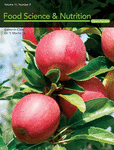
Effects of jujube (Ziziphus jujuba mill.) fruit extracts on oxidative stress: A systematic review and meta‐analysis of rodent studies
2024 May 22 Food Science & Nutrition Zhu D, Zhu Y, Tan H, Ding R, Dai Q, Du X, et al.
Animal Study Systematic Review Oxidative Stress Stress JujubeJujube fruit extracts significantly alleviate oxidative stress in rodent models, potentially offering a valuable dietary supplement against diseases linked to oxidative stress.
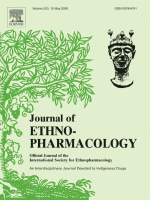
Polysaccharides from Polygonatum cyrtonema Hua prevent post-traumatic stress disorder behaviors in mice: Mechanisms from the perspective of synaptic injury, oxidative stress, and neuroinflammation
2024 Jan Journal of Ethnopharmacology Xie P, Chen L, Wang J, Wang X, Yang S, Zhu G
PSP prevents SPS-induced PTSD-like behaviors and synaptic damage by regulating oxidative stress and NLRP3-mediated inflammation through the Nrf2/HO-1 signaling pathway.
Experimental Study Animal Study PTSD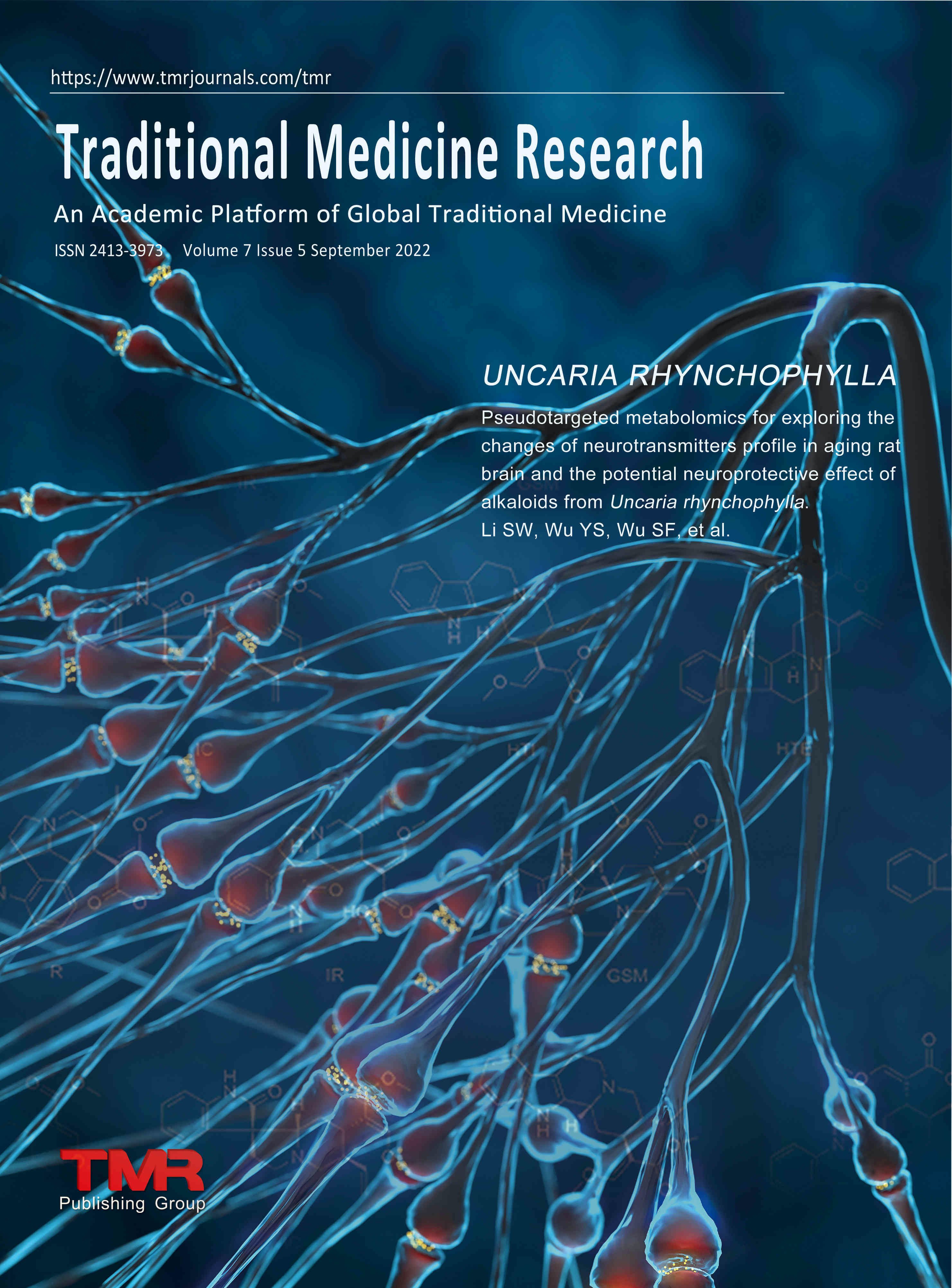
Exploring a novel traditional Chinese medicine prescription containing Chrysanthemi Flos for retinal diseases: an integrated strategy of data mining and network pharmacology
2024 Jan Traditional Medicine Research Zhang JX, Zhang KL, Chang XW, Gu JF, Wei SB, Zhu BY, et al.
Data Mining Network Pharmacology Chrysanthemum Retinitis PigmentosaThe traditional Chinese medicine prescription combination of Chrysanthemi Flos, Cassiae Semen, Lycii Fructus, Angelicae Sinensis Radix and Salviae Miltiorrhizae Radix et Rhizoma presents potential for treating retinal diseases.
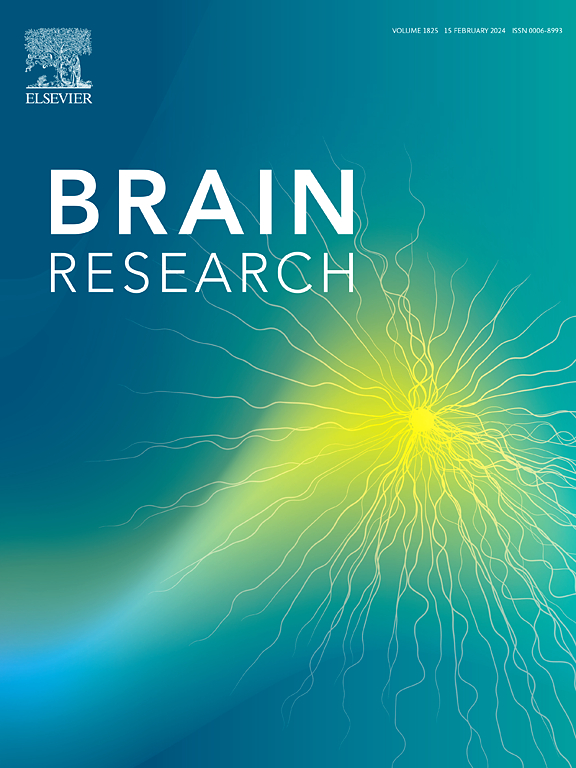
Pomegranate (Punica granatum L.) and its phytochemicals as anxiolytic; an underreported effect with therapeutic potential: A systematic review
2023 Dec Brain Research Flores-Bazán T, Betanzos-Cabrera G, Guerrero-Solano JA, Negrete-Díaz JV, German-Ponciano LJ, Olivo-Ramírez D
Systematic Review Anxiety PomegranatePomegranate fruit and its phytochemicals may offer a novel, natural alternative for the treatment of pathological anxiety, with fewer adverse effects than traditional medications.
Evaluation of possible neuroprotective effects of virgin coconut oil on aluminum‐induced neurotoxicity in an in vitro Alzheimer's disease model
2023 Nov 21 Journal of Applied Toxicology Demirel G, Sanajou S, Yirün A, Çakir DA, Berkkan A, Baydar T, et al.
Experimental Study Alzheimer's Disease Coconut OilVirgin coconut oil shows potential therapeutic promise against Alzheimer's disease by reducing key markers and enhancing neurotransmitter parameters.
Research insights are moderated by the Research Hub team and offer an at-a-glance overview of interesting research findings.

2024 Food Science & Nutrition
Jujube fruit extracts significantly alleviate oxidative stress in rodent models, potentially offering a valuable dietary supplement against diseases linked to oxidative stress.
Animal Study Jujube Stress
Effects of jujube (Ziziphus jujuba mill.) fruit extracts on oxidative stress: A systematic review and meta‐analysis of rodent studies
Zhu D, Zhu Y, Tan H, Ding R, Dai Q, Du X, et al.

2024 Traditional Medicine Research
The traditional Chinese medicine prescription combination of Chrysanthemi Flos, Cassiae Semen, Lycii Fructus, Angelicae Sinensis Radix and Salviae Miltiorrhizae Radix et Rhizoma presents potential for treating retinal diseases.
Data Mining Chrysanthemum Retinitis Pigmentosa
Exploring a novel traditional Chinese medicine prescription containing Chrysanthemi Flos for retinal diseases: an integrated strategy of data mining and network pharmacology
Zhang JX, Zhang KL, Chang XW, Gu JF, Wei SB, Zhu BY, et al.

2023 Brain Research
Pomegranate fruit and its phytochemicals may offer a novel, natural alternative for the treatment of pathological anxiety, with fewer adverse effects than traditional medications.
Systematic Review Anxiety Pomegranate
Pomegranate (Punica granatum L.) and its phytochemicals as anxiolytic; an underreported effect with therapeutic potential: A systematic review
Flores-Bazán T, Betanzos-Cabrera G, Guerrero-Solano JA, Negrete-Díaz JV, German-Ponciano LJ, Olivo-Ramírez D
2023 Journal of Applied Toxicology
Virgin coconut oil shows potential therapeutic promise against Alzheimer's disease by reducing key markers and enhancing neurotransmitter parameters.
Experimental Study Alzheimer's Disease Coconut Oil
Evaluation of possible neuroprotective effects of virgin coconut oil on aluminum‐induced neurotoxicity in an in vitro Alzheimer's disease model
Demirel G, Sanajou S, Yirün A, Çakir DA, Berkkan A, Baydar T, et al.
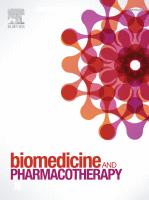
2023 Biomedicine & Pharmacotherapy
Fructus Lycii and Salvia miltiorrhiza Bunge extract (FSE) shows potential as a clinical treatment for retinitis pigmentosa by inhibiting photoreceptor cell death following oxidative stress.
Experimental Study Dan Shen Goji Berry Retinitis Pigmentosa
Fructus Lycii and Salvia miltiorrhiza Bunge extract attenuate oxidative stress-induced photoreceptor ferroptosis in retinitis pigmentosa
Yang Y, Wang Y, Deng Y, Lu J, Xiao L, Li J, et al.
Review Articles
Review articles summarise and critically evaluate the current state of research on a specific topic or field by synthesising multiple primary research studies.

Effects of jujube (Ziziphus jujuba mill.) fruit extracts on oxidative stress: A systematic review and meta‐analysis of rodent studies
2024 May 22 Food Science & Nutrition Zhu D, Zhu Y, Tan H, Ding R, Dai Q, Du X, et al.
Animal Study Systematic Review Oxidative Stress Stress JujubeJujube fruit extracts significantly alleviate oxidative stress in rodent models, potentially offering a valuable dietary supplement against diseases linked to oxidative stress.

Pomegranate (Punica granatum L.) and its phytochemicals as anxiolytic; an underreported effect with therapeutic potential: A systematic review
2023 Dec Brain Research Flores-Bazán T, Betanzos-Cabrera G, Guerrero-Solano JA, Negrete-Díaz JV, German-Ponciano LJ, Olivo-Ramírez D
Systematic Review Anxiety PomegranatePomegranate fruit and its phytochemicals may offer a novel, natural alternative for the treatment of pathological anxiety, with fewer adverse effects than traditional medications.

Isolation, Identification, Activity Evaluation, and Mechanism of Action of Neuroprotective Peptides from Walnuts: A Review
2023 Sep 21 Nutrients Zhang L, Bai YY, Hong ZS, Xie J, Tian Y
Review Article Stress Oxidative Stress Neuroprotective WalnutThe bioactive peptides found in walnuts have potential neuroprotective effects, including reducing oxidative stress and neuroinflammation, and promoting autophagy and balance in the cholinergic system.
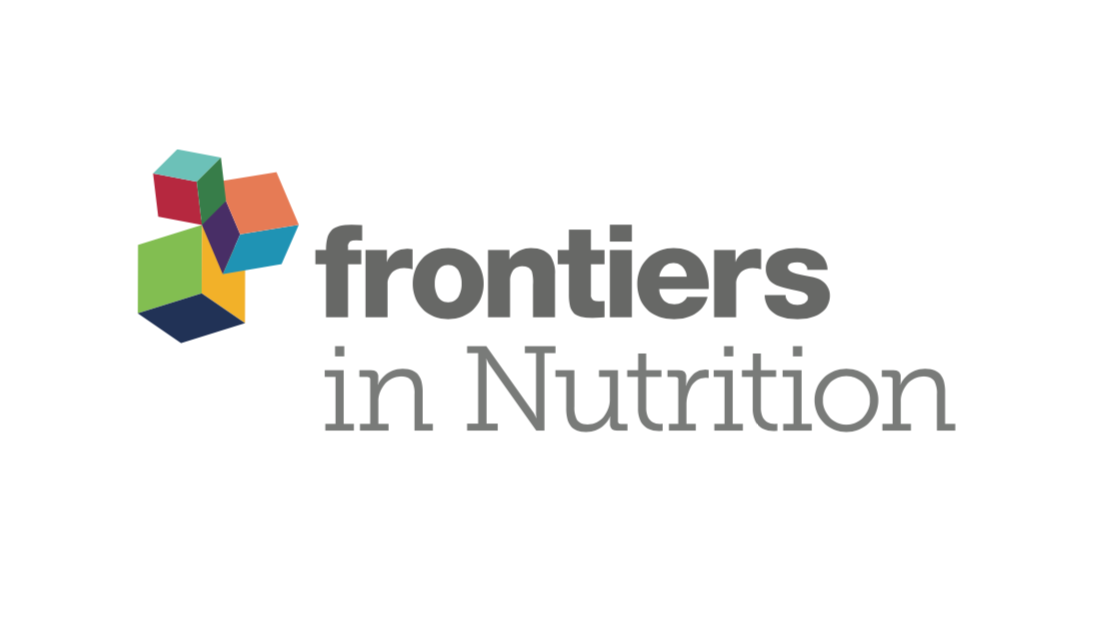
Eating more sardines instead of fish oil supplementation: Beyond omega-3 polyunsaturated fatty acids, a matrix of nutrients with cardiovascular benefits
2023 Apr 14 Frontiers in Nutrition Santos HO, May TL, Bueno AA
Review Article Cholesterol Metabolic Syndrome High Blood Pressure Sardine Type 2 DiabetesSardines, being an affordable source of Omega-3 and other cardioprotective nutrients, can potentially reduce the need for Omega-3 supplementation and manage cardiometabolic diseases.

Review on potential effects of traditional Chinese medicine on glaucoma
2023 Mar Journal of Ethnopharmacology Qi S, Zhang J, Zhu H, Wang Z, Li W
Review Article GlaucomaTraditional Chinese Medicines (TCM) could increase the survival rate of retinal ganglion cells, thereby playing an active role in treating glaucoma.
Clinical Trials
Clinical trials are research studies that involve people and are conducted to evaluate the safety and efficacy of new treatments or interventions, such as drugs, medical devices, or behavioural therapies.
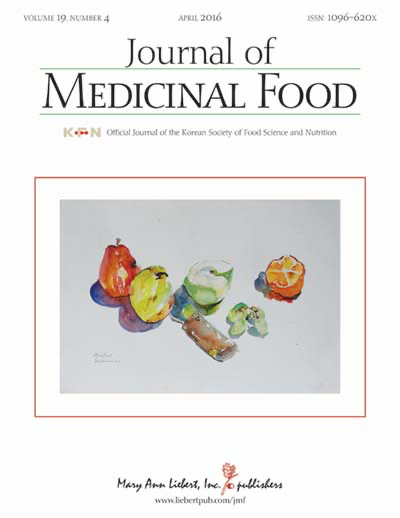
A 4-Week Pecan-Enriched Diet Improves Postprandial Lipid Peroxidation in Aging Adults
2023 Sep 01 Journal of Medicinal Food Cogan B, Pearson RC, Jenkins NT, Paton CM, Cooper JA
Randomised Controlled Trial Oxidative Stress Pecan Postprandial Oxidative StressDaily consumption of pecans for a month can help protect against post-meal oxidative stress in aging adults.
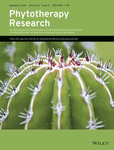
The effect of concentrated pomegranate juice on biomarkers of inflammation, oxidative stress, and sex hormones in overweight and obese women with polycystic ovary syndrome: A randomized controlled trial
2023 Jan 18 Phytotherapy Research Abedini M, Ramezani‐Jolfaie N, Ghasemi‐Tehrani H, Tarrahi MJ, Amani R
Randomised Controlled TrialPomegranate juice supplementation has been found to effectively decrease testosterone levels in overweight and obese women diagnosed with polycystic ovary syndrome.
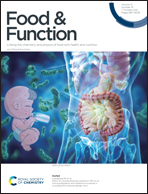
Daily blueberry consumption for 12 weeks improves endothelial function in postmenopausal women with above-normal blood pressure through reductions in oxidative stress: a randomized controlled trial
2023 Jan Food & Function Woolf EK, Terwoord JD, Litwin NS, Vazquez AR, Lee SY, Ghanem N, et al.
Daily consumption of freeze-dried blueberry powder for 12 weeks improves endothelial function through reduced oxidative stress in postmenopausal women with above-normal blood pressure.
Randomised Controlled Trial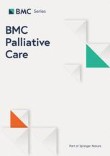
Effect of chocolate on older patients with cancer in palliative care: a randomised controlled study
2022 Jan 04 BMC Palliative Care Vettori JC, da-Silva LG, Pfrimer K, Jordão AA, Louzada-Junior P, Moriguti JC, et al.
Clinical Study Randomised Controlled Trial Cancer Chocolate Palliative Care Cancer Treatment SupportConsuming chocolate with higher cocoa content can improve the nutritional status and functionality of older cancer patients in palliative care.
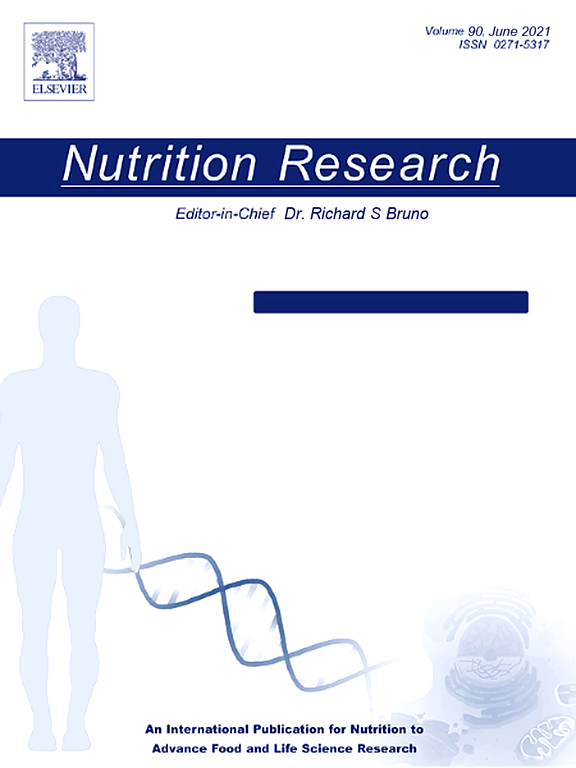
Pecan-enriched diets decrease postprandial lipid peroxidation and increase total antioxidant capacity in adults at-risk for cardiovascular disease
2021 Sep Nutrition Research Guarneiri LL, Paton CM, Cooper JA
Daily pecan consumption, either as part of the diet or as a substitution for isocaloric foods, resulted in suppressed postprandial lipid peroxidation and elevated postprandial TAC. Fasting γ-tocopherol levels also increased in both pecan groups. These findings suggest that regular pecan consumption has a protective effect against oxidative stress following a high-fat meal in adults at risk for CVD.
Clinical Study Randomised Controlled Trial Cardiovascular Disease Oxidative StressStudy Protocols
Published study protocols are detailed plans that outline the objectives, methodology, statistical analyses, and organisation of a research study that have been made publicly available for others to review and use as a reference.
Presentation Slides

Animal Study
Jujube fruit extracts significantly alleviate oxidative stress in rodent models, potentially offering a valuable dietary supplement against diseases linked to oxidative stress.
Zhu D, Zhu Y, Tan H, Ding R, Dai Q, Du X, Liu Y, Yue R

Data Mining
The traditional Chinese medicine prescription combination of Chrysanthemi Flos, Cassiae Semen, Lycii Fructus, Angelicae Sinensis Radix and Salviae Miltiorrhizae Radix et Rhizoma presents potential for treating retinal diseases.
Zhang JX, Zhang KL, Chang XW, Gu JF, Wei SB, Zhu BY, Wang Q, Wu DL, Gui SY, Yan H, Duan JA

Systematic Review
Pomegranate fruit and its phytochemicals may offer a novel, natural alternative for the treatment of pathological anxiety, with fewer adverse effects than traditional medications.
Flores-Bazán T, Betanzos-Cabrera G, Guerrero-Solano JA, Negrete-Díaz JV, German-Ponciano LJ, Olivo-Ramírez D

Experimental Study
Virgin coconut oil shows potential therapeutic promise against Alzheimer's disease by reducing key markers and enhancing neurotransmitter parameters.
Demirel G, Sanajou S, Yirün A, Çakir DA, Berkkan A, Baydar T, Erkekoğlu P

Experimental Study
Fructus Lycii and Salvia miltiorrhiza Bunge extract (FSE) shows potential as a clinical treatment for retinitis pigmentosa by inhibiting photoreceptor cell death following oxidative stress.
Yang Y, Wang Y, Deng Y, Lu J, Xiao L, Li J, Zhou Y, Nie F, Chen X, Peng J, Tan H, Qin Y, Peng Q
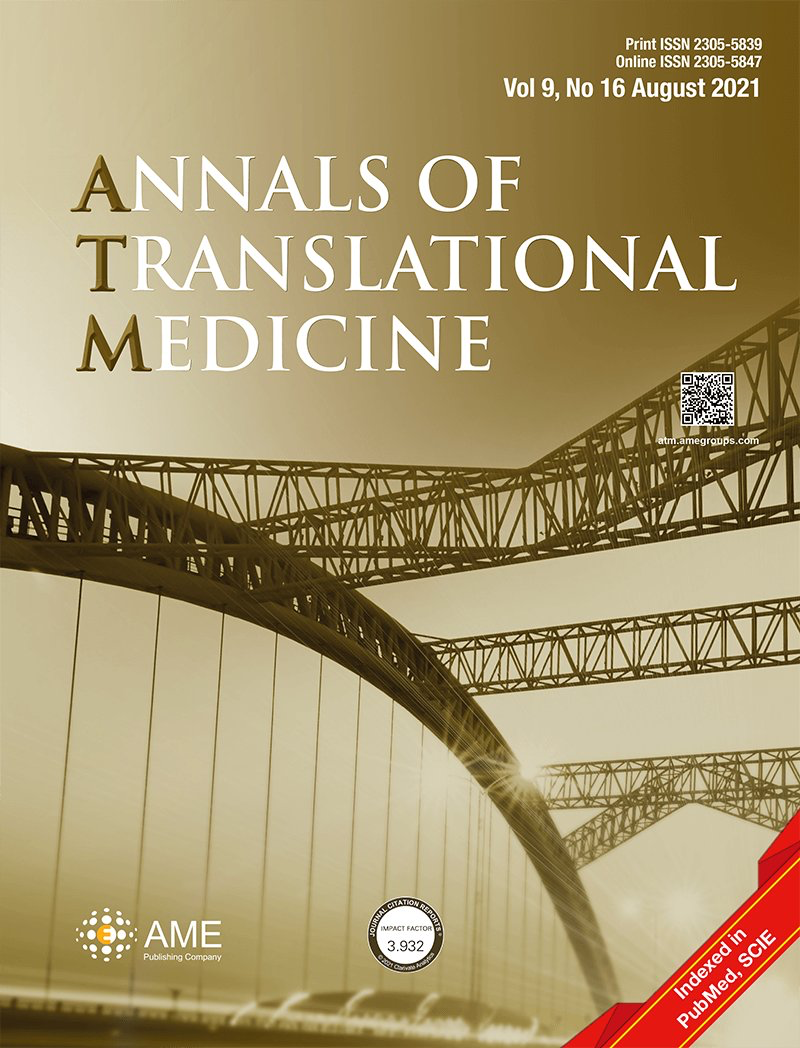
Network Pharmacology
The research unveils luteolin, quercetin, and kaempferol in RALRG as promising complementary components for RP treatment, with a key role in managing oxidative stress and PI3K/AKT signaling pathways.
Wu J, Sun Z, Zhang D, Liu H, Wu J, Zhang S

Review Article
The bioactive peptides found in walnuts have potential neuroprotective effects, including reducing oxidative stress and neuroinflammation, and promoting autophagy and balance in the cholinergic system.
Zhang L, Bai YY, Hong ZS, Xie J, Tian Y

Experimental Study
Theabrownin from dark tea can potentially reverse insulin resistance and regulate glycolipid metabolism, with longer fermented samples showing greater effects.
Liu J, Wang X, Zhu Y, Deng H, Huang X, Jayavanth P, Xiao Y, Wu J, Jiao R

Randomised Controlled Trial
Daily consumption of pecans for a month can help protect against post-meal oxidative stress in aging adults.
Cogan B, Pearson RC, Jenkins NT, Paton CM, Cooper JA

Cohort Study
Consuming “Sneznik-1/79” mineral water significantly improves intestinal health and reduces cholesterol in type 2 diabetes patients.
Jovicic N, Andjic M, Novakovic J, Jeremic N, Zivkovic V, Srejovic I, Stanojevic D, Ristic P, Bolevich S, Jakovljevic V

Review Article
Sardines, being an affordable source of Omega-3 and other cardioprotective nutrients, can potentially reduce the need for Omega-3 supplementation and manage cardiometabolic diseases.
Santos HO, May TL, Bueno AA

Review Article
Traditional Chinese Medicines (TCM) could increase the survival rate of retinal ganglion cells, thereby playing an active role in treating glaucoma.
Qi S, Zhang J, Zhu H, Wang Z, Li W

Systematic Review
Saffron supplementation significantly decreased oxidative stress markers and has beneficial effects in reducing oxidative stress.
Abedi A, Ghobadi H, Sharghi A, Iranpour S, Fazlzadeh M, Aslani MR

Randomised Controlled Trial
Pomegranate juice supplementation has been found to effectively decrease testosterone levels in overweight and obese women diagnosed with polycystic ovary syndrome.
Abedini M, Ramezani‐Jolfaie N, Ghasemi‐Tehrani H, Tarrahi MJ, Amani R

Network Pharmacology
Chrysanthemum has several active ingredients that can potentially treat dry eye by inhibiting inflammation-related factors and pathways, thus reducing inflammation of lacrimal gland tissue.
Cao LY, Long Q, Jiang PF, Peng J, Peng QH
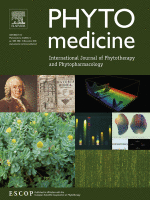
Review Article
Pomegranate and its active components can protect against natural and chemical toxic agents, impacting mechanisms such as oxidative stress, inflammation, apoptosis, and liver or cardiac function regulation.
Hosseini A, Razavi BM, Hosseinzadeh H
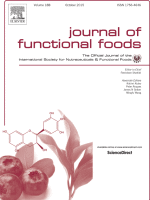
Review Article
Carrot's bioactive compounds can regulate immune response, reduce oxidative stress, and prevent damaging oxidative destruction, making it a potential preventive tool for various diseases.
Anjani G, Ayustaningwarno F, Eviana R
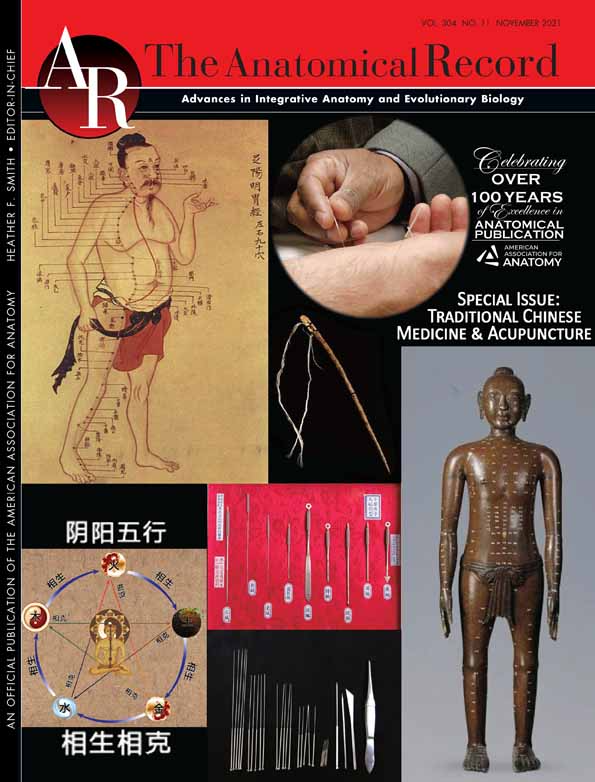
Experimental Study
Pomegranate has been found to alleviate morphological and functional changes in the thyroid glands induced by Lithium Carbonate by controlling apoptosis and oxidative stress.
El‐Din WAN, Fadel R, Rashid A, Al‐Mahameed AE, Othman MA
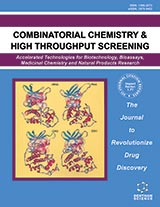
Network Pharmacology
The Chinese medicine formulas Zuo Gui Wan and You Gui Wan have the potential to treat premature ovarian failure through different pharmacological pathways.
Shanshan Mei, Chaoqin Yu, Jie Ding, Wen Cheng
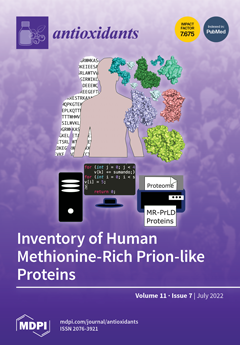
Network Pharmacology
Kelulut honey, either alone or in combination with metformin or clomiphene, can alleviate oxidative stress and reproductive and metabolic abnormalities in rats with polycystic ovary syndrome.
Kamal DAM, Ibrahim SF, Ugusman A, Mokhtar MH
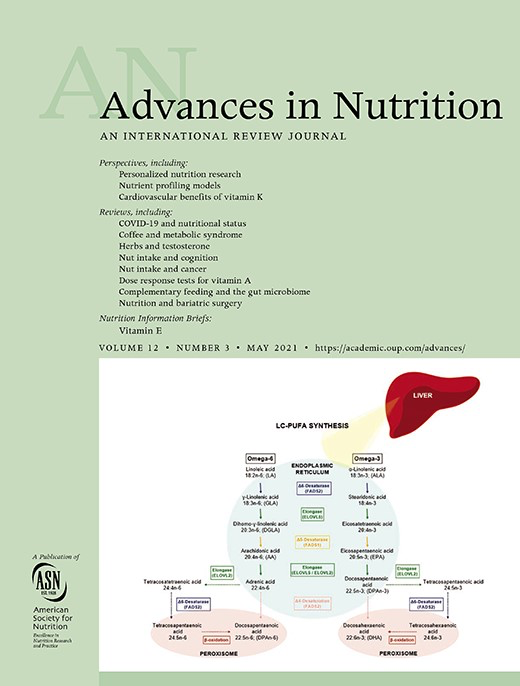
Systematic Review
Prunes demonstrate potential as a dietary intervention to protect against, prevent and even reverse bone loss in osteoporosis, particularly in postmenopausal women.
Damani JJ, De Souza MJ, VanEvery HL, Strock NCA, Rogers CJ
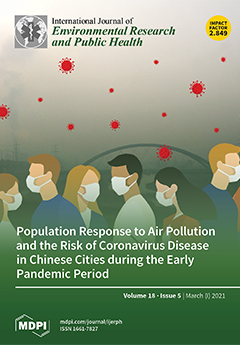
Systematic Review
Dietary strategies, such as caloric restriction and ketogenic diets, can alleviate chronic pain and enhance quality of life.
Cuevas-Cervera M, Perez-Montilla J, Gonzalez-Muñoz A, Garcia-Rios M, Navarro-Ledesma S

Review Article
Cherries and blueberries, rich in phenolic compounds, can be effectively used in pharmaceutical products, smart foods, functional beverages, and nutraceuticals to prevent or treat diseases.
Gonçalves AC, Nunes AR, Flores-Félix JD, Alves G, Silva LR
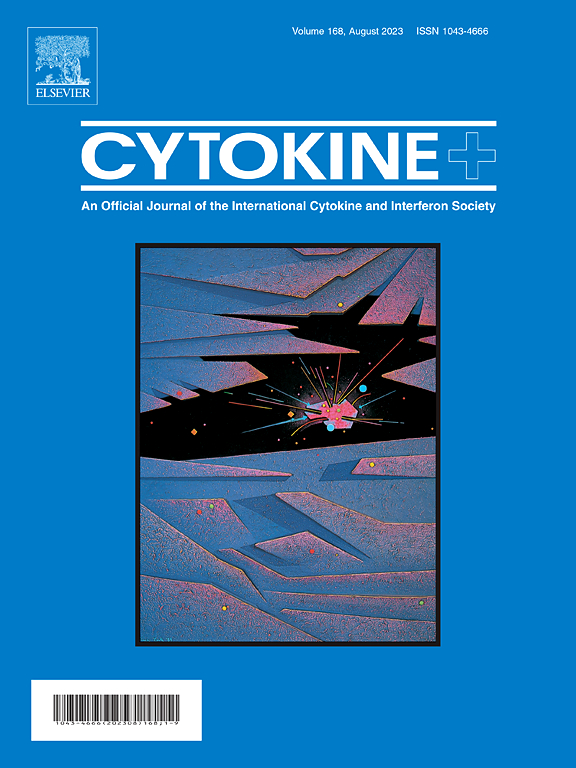
Animal Study
Walnut seed skin extract demonstrates potential hepato-renal protective effects, inhibiting inflammatory responses, oxidative stress and apoptosis, in kidney-damaged Sprague-Dawley rats.
Askin S, Askin H, Dursun E, Palabiyik E, Uguz H, Cakmak , Koc K
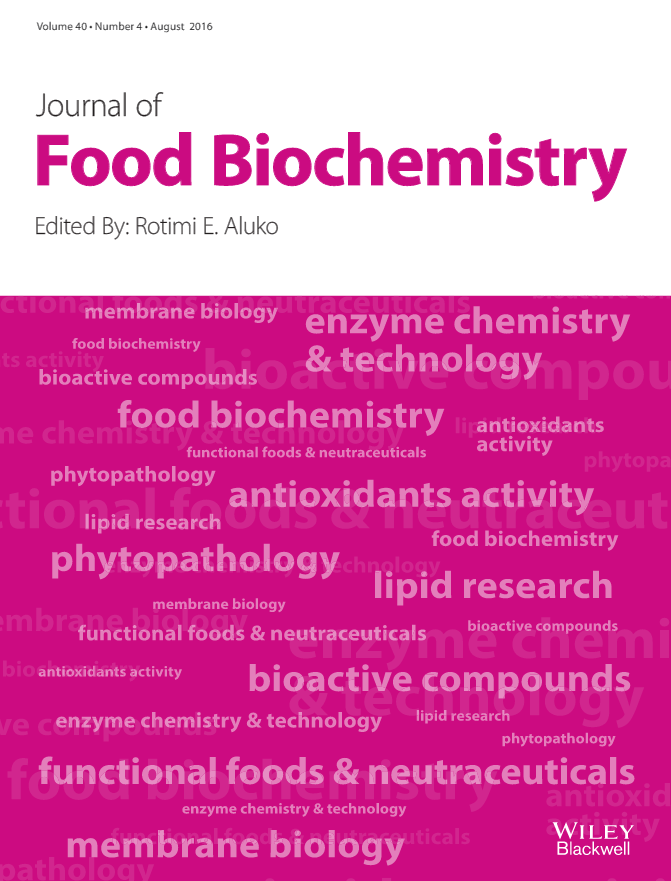
Experimental Study
Coconut water and coconut milk ameliorate the negative impacts of heat stress on gastrointestinal health by reducing oxidative stress and suppressing inflammatory responses.
Ajeigbe KO, Oladokun OO, Owonikoko MW, Adegoke GA

Review Article
Apple juice consumed in moderation has been found to positively impact markers of cardiovascular health, potentially influencing risk of cancer and neurodegenerative diseases.
Vallée Marcotte B, Verheyde M, Pomerleau S, Doyen A, Couillard C

Review Article
Acupuncture can regulate both innate and adaptive immunity of IBD patients, including the balance of Th17/Treg and Th1/Th2 cells, and also modulate intestinal flora.
Liu Z, Jiao Y, Yu T, Wang H, Zhang Y, Liu D, Xu Y, Guan Q, Lu M
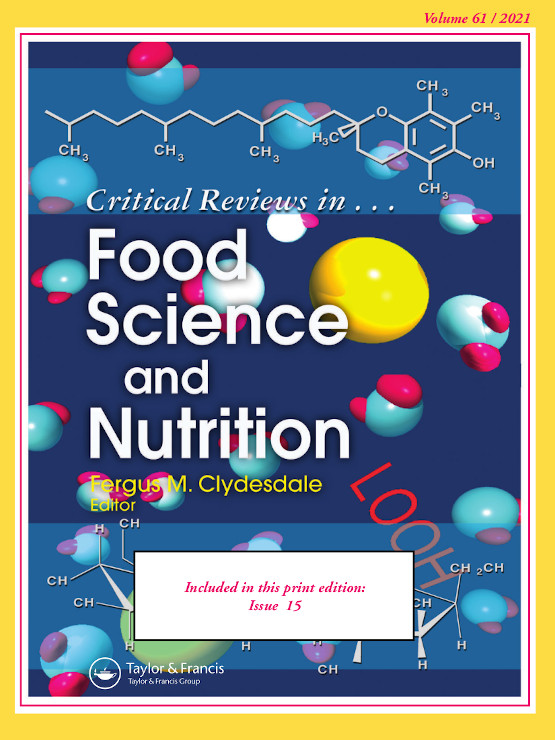
Review Article
Goji berries, notably their polysaccharides, exhibit protective effects against inflammatory bowel disease through the preservation of healthy gut microbiota.
Sun Q, Du M, Kang Y, Zhu MJ

Clinical Study
Consuming chocolate with higher cocoa content can improve the nutritional status and functionality of older cancer patients in palliative care.
Vettori JC, da-Silva LG, Pfrimer K, Jordão AA, Louzada-Junior P, Moriguti JC, Ferriolli E, Lima NKC
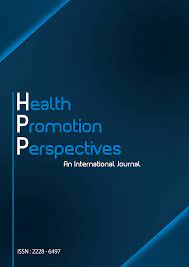
Systematic Review
Pomegranate has been confirmed to improve clinical features and reduce inflammatory, oxidative stress, and apoptosis markers in osteoarthritis.
Malek Mahdavi A, Javadivala Z

Review Article
Chinese herbal medicines could alleviate chronic kidney disease symptoms by combating fibrosis, inflammation, oxidative stress, and encouraging repair and regeneration.
Shao M, Ye C, Bayliss G, Zhuang S

Systematic Review
Green tea supplementation improves total antioxidant capacity and impacts oxidative stress based on dose levels in adults.
Rasaei N, Asbaghi O, Samadi M, Setayesh L, Bagheri R, Gholami F, Soveid N, Casazza K, Wong A, Suzuki K, Mirzaei K

Review Article
Green tea and its component EGCG, demonstrate potential as a treatment for endometriosis by inhibiting growth, invasion, adhesion and angiogenesis.
Chen X, Man GCW, Hung SW, Zhang T, Fung LWY, Cheung CW, Chung JPW, Li TC, Wang CC

Review Article
Coffee consumption may contribute to the prevention of several inflammatory diseases and types of cancer, with reduced mortality risk deemed safe up to 400mg of caffeine per day.
Barrea L, Pugliese G, Frias-Toral E, El Ghoch M, Castellucci B, Chapela SP, Carignano MA, Laudisio D, Savastano S, Colao A, Muscogiuri G

Experimental Study
Zeaxanthin dipalmitate, a wolfberry-derived carotenoid, can delay retinal degeneration in mice modelling Retinitis Pigmentosa mainly through its anti-inflammatory and oxidative stress effects.
Liu F, Liu X, Zhou Y, Yu Y, Wang K, Zhou Z, Gao H, So KF, Vardi N, Xu Y
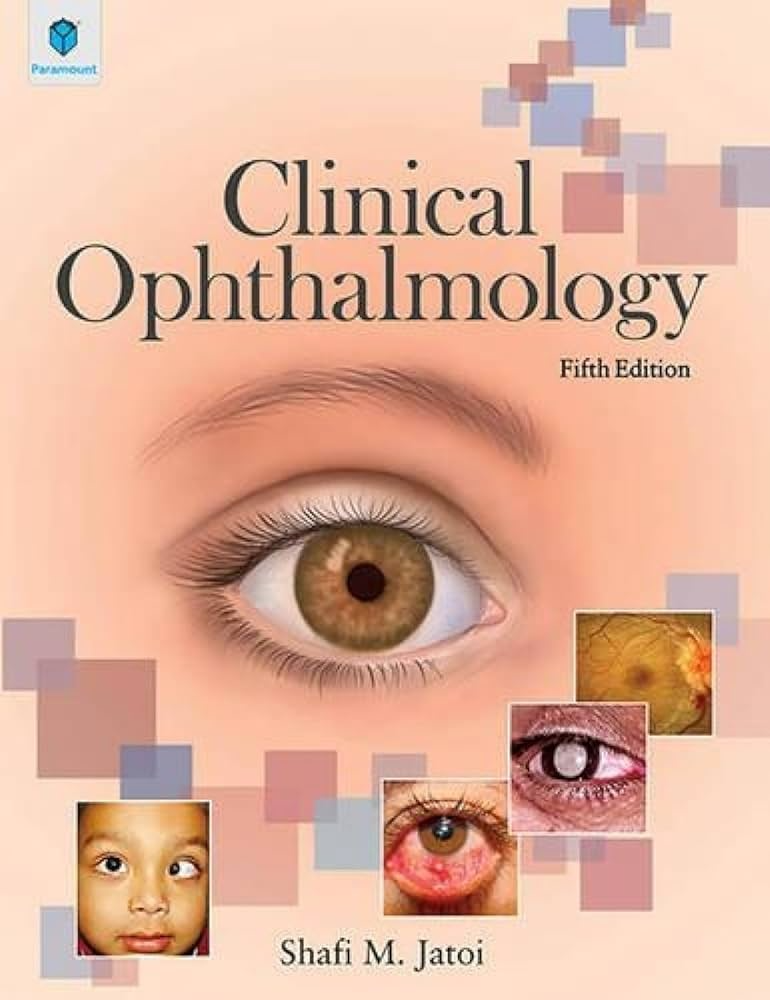
Review Article
Curcumin, with its anti-inflammatory, antioxidant, antimicrobial and antimutagenic properties, is a potential therapeutic agent for retinal diseases.
Nebbioso M, Franzone F, Greco A, Gharbiya M, Bonfiglio V, Polimeni A

Experimental Study
Fructus Lycii and Salvia miltiorrhiza Bunge extract improve retinal morphology and function by regulating the Nrf2/HO-1 pathway to curb oxidative reactions.
Ou C, Jiang P, Tian Y, Yao Z, Yang Y, Peng J, Zeng M, Song H, Peng Q
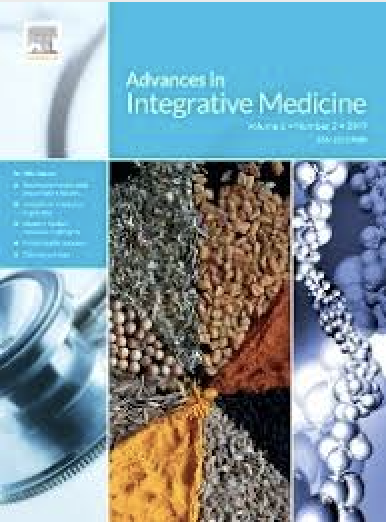
Randomised Controlled Trial
Pomegranate peel extract supplementation can decrease total cholesterol and triglyceride levels while boosting antioxidant status in obese women with knee osteoarthritis.
Haghighian MK, Rafraf M, Hemmati S, Haghravan S, Asghari-Jafarabadi M
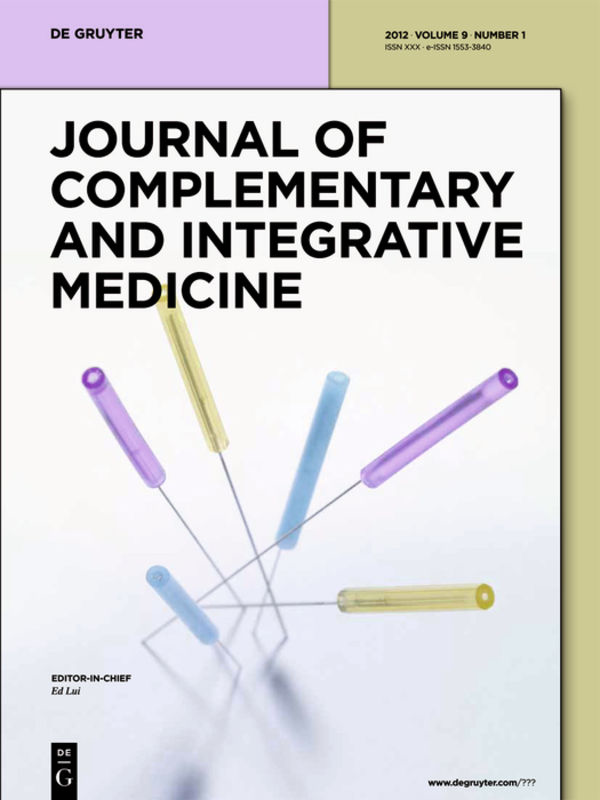
Randomised Controlled Trial
Avocado/soy unsaponifiables effectively treat osteoarthritis by controlling the balance between oxidant and antioxidant molecular markers.
Jangravi Z, Basereh S, Zaree Mahmoudabadi A, Saberi M, Alishiri GH, Korani M
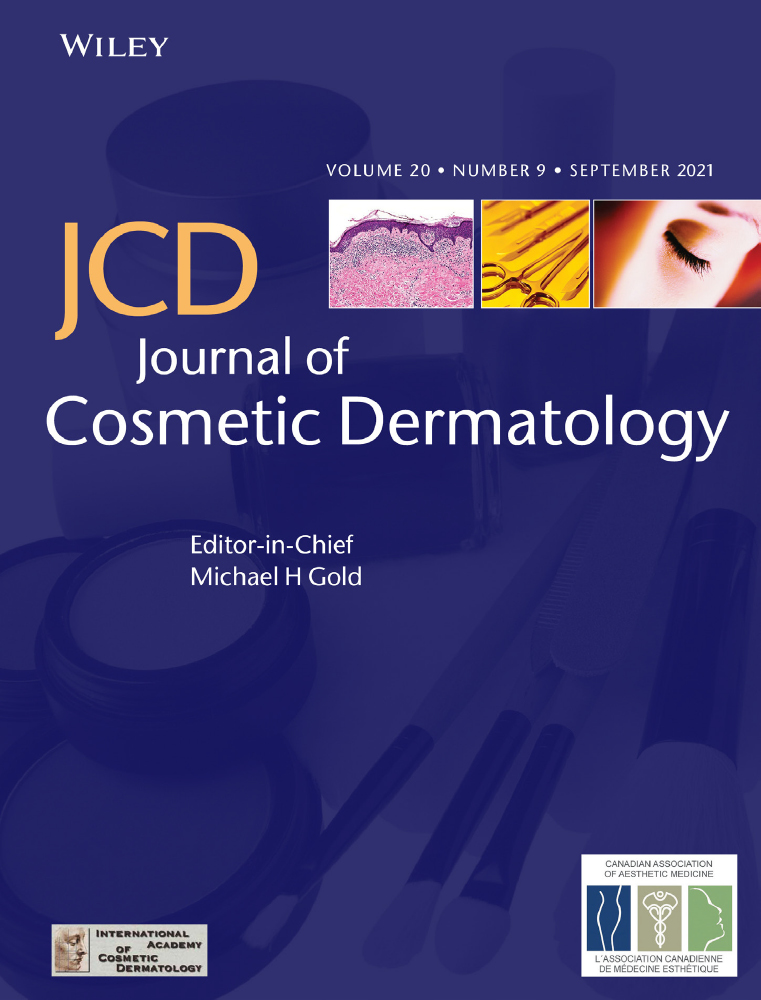
Systematic Review
These results indicate that a certain concentration of snow fungus polysaccharides can effectively alleviate skin damage caused by UVA, and they may be used as an effective component of cosmetics.
Fu H, You S, Zhao D, An Q, Zhang J, Wang C, Wang D, Li M.

Experimental Study
The Jian-Pi-Yi-Shen (JPYS) traditional Chinese medicine formula aids in the alleviation of renal dysfunction and fibrosis in chronic kidney disease (CKD) rats by combating inflammation and cellular apoptosis.
Zhou F, Zou X, Zhang J, Wang Z, Yang Y, Wang D
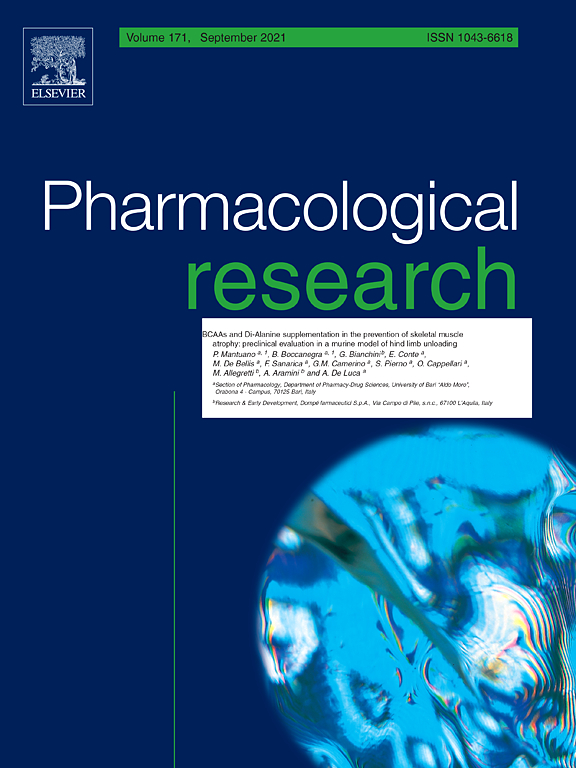
Review Article
Baicalin, a Scutellaria baicalensis extract, has been found to have numerous therapeutic applications in liver and gut diseases by mediating apoptosis and immune response pathways.
Hu Q, Zhang W, Wu Z, Tian X, Xiang J, Li L, Li Z, Peng X, Wei S, Ma X, Zhao Y

Experimental Study
Extra virgin olive oil high in minor polar compounds significantly improves kidney function, reduces oxidative stress, inflammation, and ultimately benefits the body composition.
Noce A, Marrone G, Urciuoli S, Di Daniele F, Di Lauro M, Pietroboni Zaitseva A, Di Daniele N, Romani A

Experimental Study
Pomegranate juice extract (PPJE) appears to reduce chemotherapy-induced skin side effects by inhibiting inflammation and promoting wound repair on the skin.
Rapa SF, Magliocca G, Pepe G, Amodio G, Autore G, Campiglia P, Marzocco S

Experimental Study
Ginger supplementation can prevent ethanol-induced reproductive dysfunction by improving hormone levels, reducing oxidative damage, inflammation, and regulating genes involved in testosterone synthesis.
Li N, Xing Y, Sultan AH, Raeeszadeh M, Akbari A, Liu H
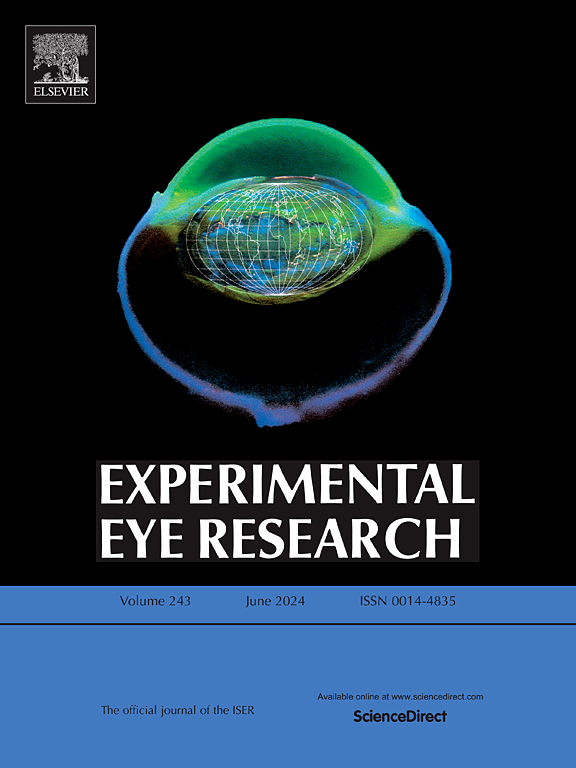
Experimental Study
Gypenosides, the main functional component from the vine Gynostemma pentaphyllum, display potential as a treatment for Retinitis Pigmentosa by protecting photoreceptor cells from degeneration.
Alhasani RH, Zhou X, Biswas L, Li X, Reilly J, Zeng Z, Shu X

Experimental Study
Jujube seed extract has been found to primarily reduce anxiety by regulating the GABAergic and serotonergic synapse pathways, specifically modulating GABRA1, HTR1A, and HTR2A.
Chen L, Zhang X, Hu C, Zhang Y, Zhang L, Kan J, Li B, Du J
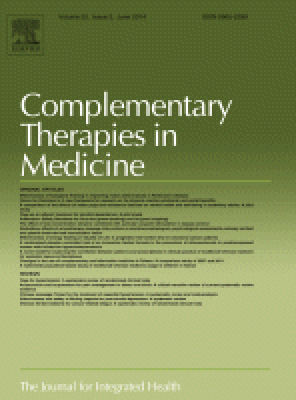
Systematic Review
Cinnamon supplementation significantly decreases inflammation and oxidative stress levels, serving as a potential additive for cardiometabolic health improvement.
Zhu, Changyou; Yan, Hongmei; Yin, Zheng; Santos, Heitor O; Melahat Sedanur Macit; et al
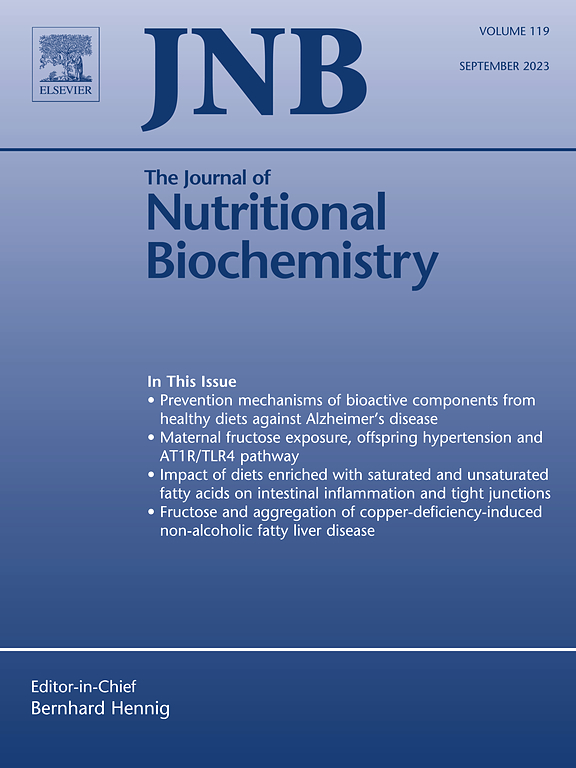
Review Article
Honey, with its variable composition based on botanical origin, exhibits antioxidant and anti-inflammatory properties, suggesting its potential efficacy in managing obesity-related dysfunctions, including neurodegeneration, through improved glycemic control and lipid profile.
Terzo S, Mulè F, Amato A

Systematic Review
Acupuncture at Zusanli (ST36) might be effective in reducing injuries induced by sepsis in various organs by reducing oxidative stress and inflammation.
Lai F, Ren Y, Lai C, Chen R, Yin X, Tan C, Li J, Yang C, Liang G, Li J, Zeng R

Systematic Review
Cocoa consumption significantly reduces markers of oxidative stress in the adult population, affirming its important role in the human metabolic pathway.
Mehrabani S, Arab A, Mohammadi H, Amani R
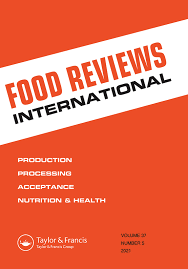
Systematic Review
Sesame consumption significantly increases enzymatic (superoxide dismutase, glutathione peroxidase, catalase) and non-enzymatic (vitamin C, vitamin E, β-carotene, and glutathione) antioxidants.
Moghtaderi F, Ramezani-Jolfaie N, Raeisi-Dehkordi H, Salehi-Abargouei A

Animal Study
Pomegranate rind extract has been found to decrease pain and inflammation, suggesting it could contribute to treating rheumatoid arthritis.
Karwasra R, Singh S, Sharma D, Sharma S, Sharma N, Khanna K

Systematic Review
Bioactive compounds present in different parts of radishes, such as leaves, sprouts, stem and roots, act on a variety of potential drug targets associated with ailments, such as cancer, inflammation, liver injury and diabetes.
Abinaya ManivannanOrcID,Jin-Hee Kim,Do-Sun Kim,Eun-Su Lee andHye-Eun Lee

Randomised Controlled Trial
Daily consumption of tart cherry juice for 12 weeks showed anti-oxidative and anti-inflammatory properties which may reduce blood pressure and lower LDL cholesterol in older adults.
Chai S, Davis K, Zhang Z, Zha L, Kirschner K

Randomised Controlled Trial
Daily consumption of tart cherry juice may enhance cognitive abilities in older adults, likely due to reduction of hypertension, inflammation, and oxidative stress.
Chai SC, Jerusik J, Davis K, Wright RS, Zhang Z
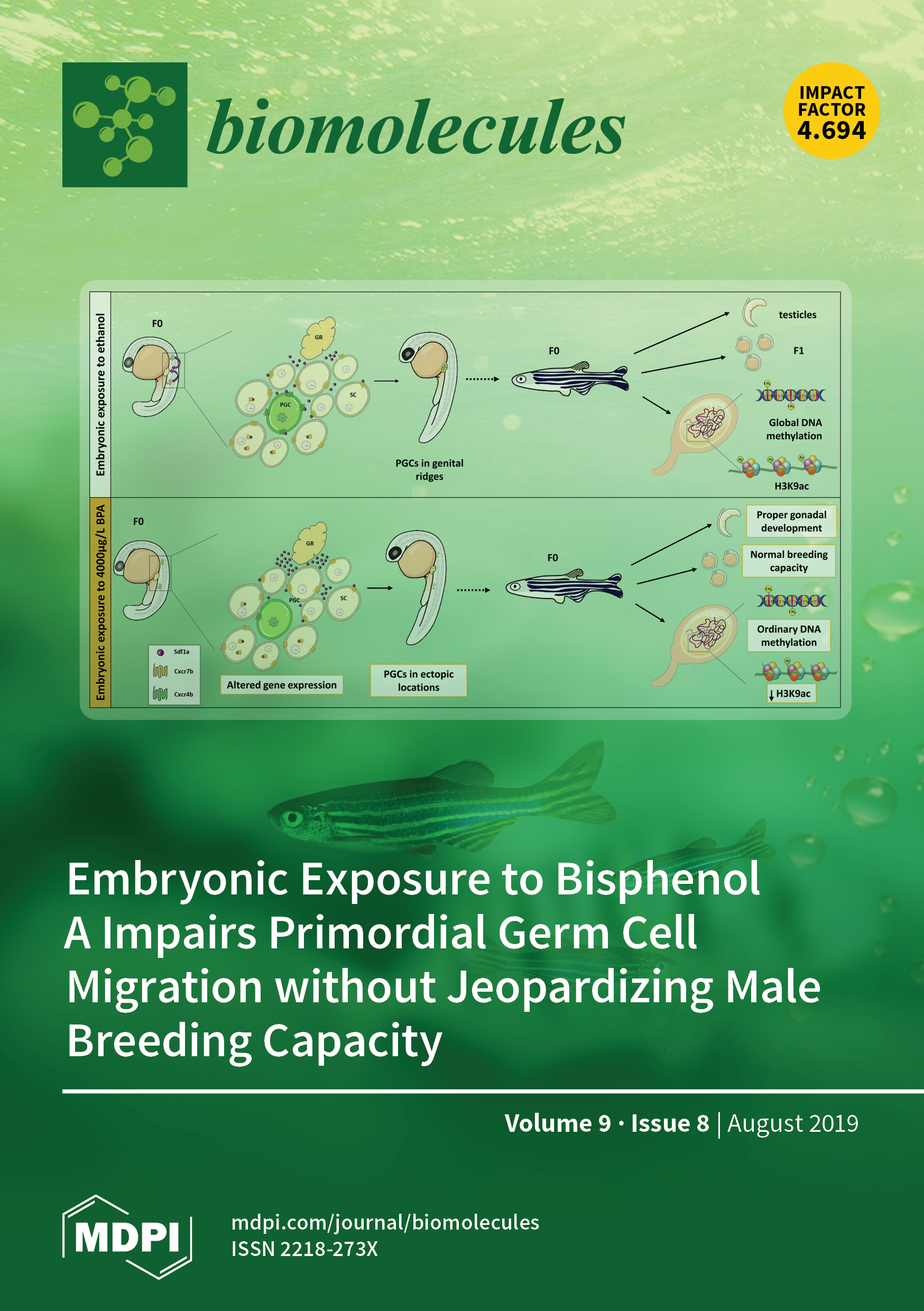
Systematic Review
Ginger supplementation enhances the production of testosterone in males by reducing oxidative stress and increasing luteinizing hormone production, cholesterol in testes, and blood flow to the testes.
Banihani SA
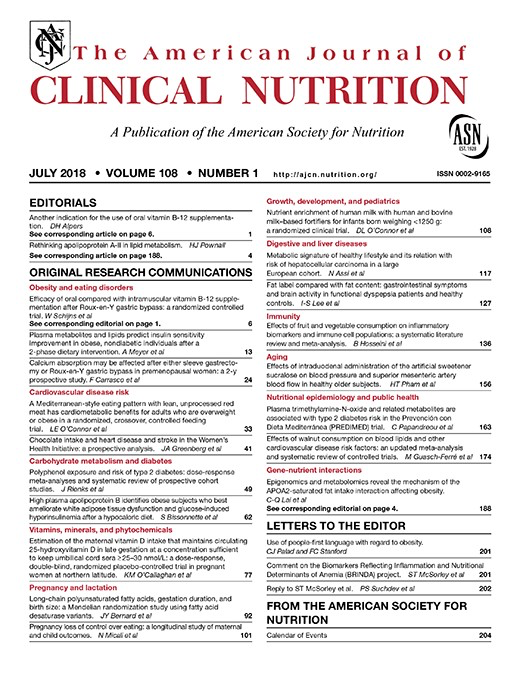
Systematic Review
Incorporating walnuts into the diet improved blood lipid profile without adversely affecting body weight or blood pressure.
Marta Guasch-Ferré, Jun Li, Frank B Hu, Jordi Salas-Salvadó, Deirdre K Tobias

Review Article
Acupuncture effectively manages a range of post-spinal cord injury complications, including motor and sensory dysfunction, pain, neurogenic bowel and bladder, pressure ulcers, spasticity, and osteoporosis.
Qianqian, F., Omer, C., Lize, X., & Yun, X.
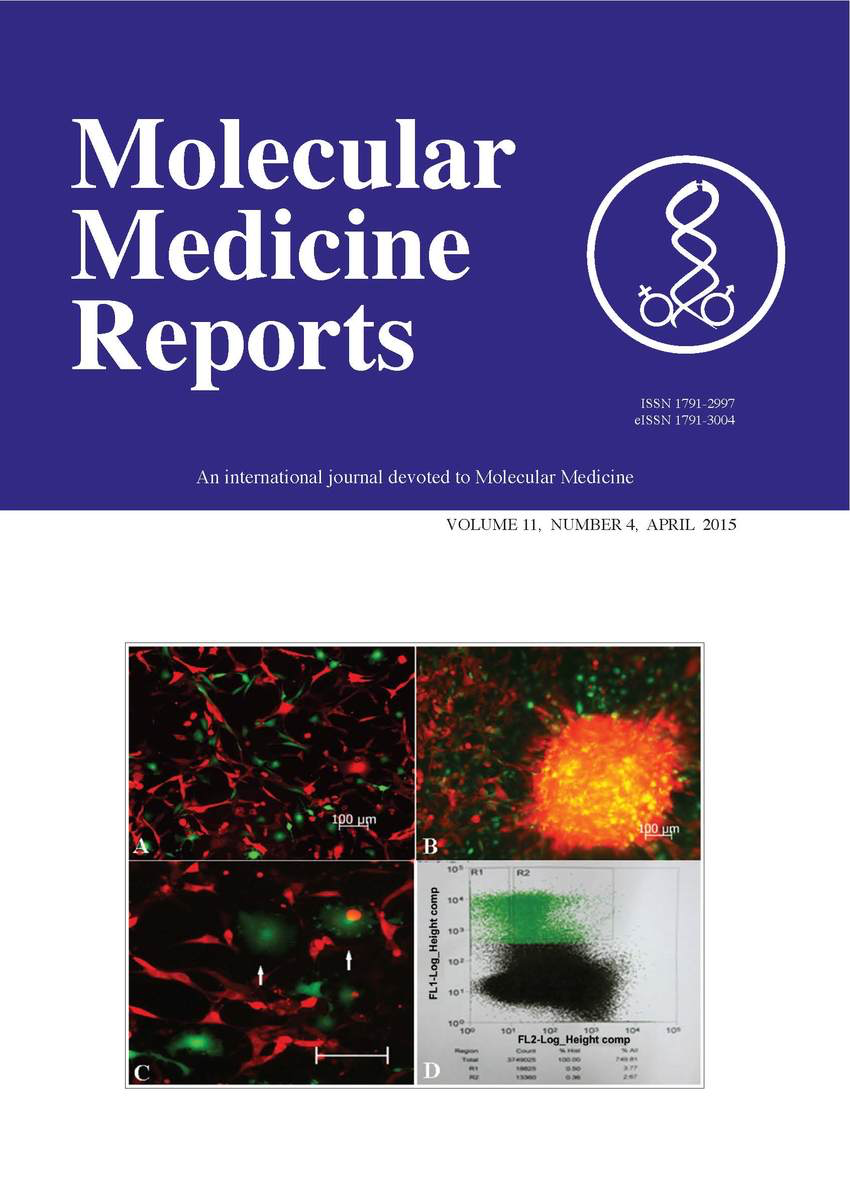
Systematic Review
Tremella fuciformis polysaccharide alleviated hydrogen peroxide‑induced oxidative stress and apoptosis in skin fibroblasts via upregulation of SIRT1 expression, indicating that TFPS may act as a potential therapeutic agent for oxidative‑stress‑associated skin diseases and aging.
Shen T, Duan C, Chen B, Li M, Ruan Y, Xu D, Shi D, Yu D, Li J, Wang C.

Clinical Study
Blueberry intake for four weeks decreased levels of a biomarker for oxidative DNA damage in postmenopausal women with pre and early stage hypertension.
Johnson SA, Feresin RG, Navaei N, Figueroa A, Elam ML, Akhavan NS, Hooshmand S, Pourafshar S, Payton ME, Arjmandi BH
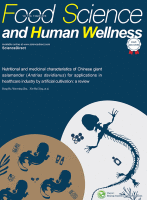
Experimental Study
Pu-erh tea water extracts could potentially enhance liver health and reduce oxidative stress in rats on a high-fat diet.
Jingjing Su, Xueqing Wang, Wenjun Song, Xiaoli Bai, Changwen Li

Systematic Review
The studies assessed showed that sesame could have a significant effect on oxidative stress and the antioxidant defense system, being considered a food with an important antioxidant function in the different populations studied.
Gouveia Lde A, Cardoso CA, de Oliveira GM, Rosa G, Moreira AS.
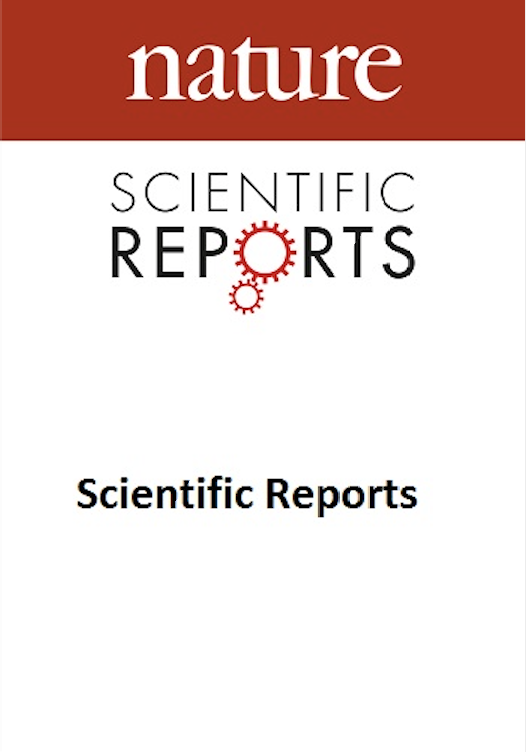
Experimental Study
The component pterostilbene, found naturally in blueberries, shows potential in preventing inflammation and oxidative stress on the human cornea, suggesting protection against dry eyes.
Li J, Ruzhi Deng , Hua X, Zhang L, Lu F, Coursey TG, Pflugfelder SC, Li DQ

Clinical Study
Powdered tart cherry supplementation surrounding endurance exercise can decrease muscle damage markers, inflammation, oxidative stress and muscle soreness, while improving performance.
Levers K, Dalton R, Galvan E, O’Connor A, Goodenough C, Simbo S, Mertens-Talcott SU, Rasmussen C, Greenwood M, Riechman S, Crouse S, Kreider RB

Clinical Study
Taking a powdered tart cherry supplement before and after intense resistance exercise can decrease muscle soreness, recovery strength loss, and signs of muscle damage.
Levers K, Dalton R, Galvan E, Goodenough C, O’Connor A, Simbo S, Barringer N, Mertens-Talcott SU, Rasmussen C, Greenwood M, Riechman S, Crouse S, Kreider RB
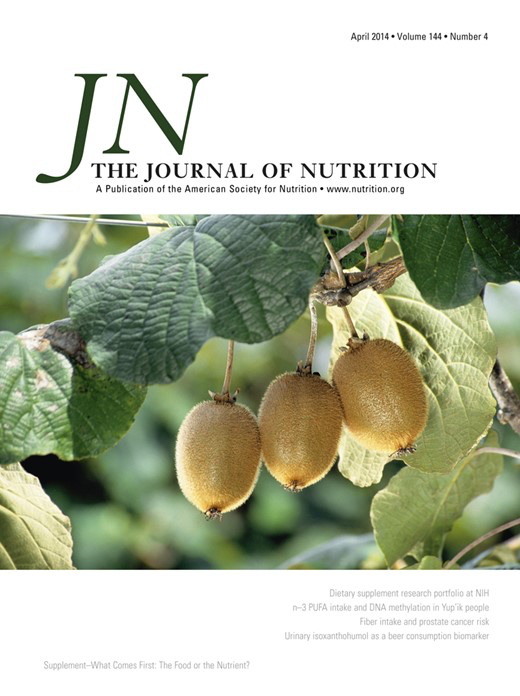
Systematic Review
Polyphenolic compounds found in walnuts not only reduce the oxidant and inflammatory load on brain cells but also improve interneuronal signaling, increase neurogenesis, and enhance sequestration of insoluble toxic protein aggregates.
Poulose SM, Miller MG, Shukitt-Hale B

Experimental Study
Honey, specifically its polyphenols, show promising signs of enhancing memory and counteracting neurodegenerative diseases by reducing oxidative stress and neuroinflammation.
Mijanur Rahman M, Gan SH, Khalil MI
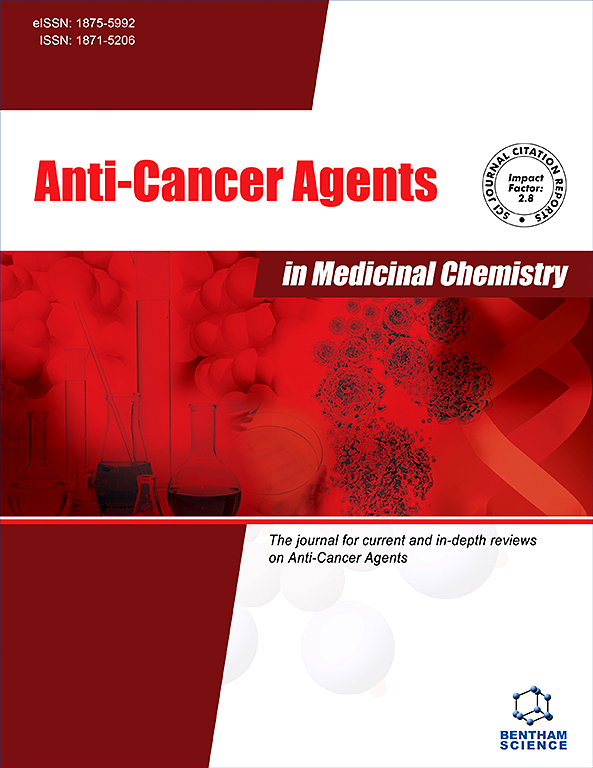
Review Article
Blueberries, due to their phenolic compounds, show potential as both dietary and supplemental anti-cancer agents by inhibiting cancer cell growth and promoting apoptosis.
Johnson S, Arjmandi B
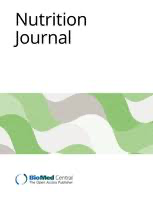
Systematic Review
These results suggest the possible antihypertensive effects of black sesame meal on improving antioxidant status and decreasing oxidant stress.
Wichitsranoi, J., Weerapreeyakul, N., Boonsiri, P. et al.
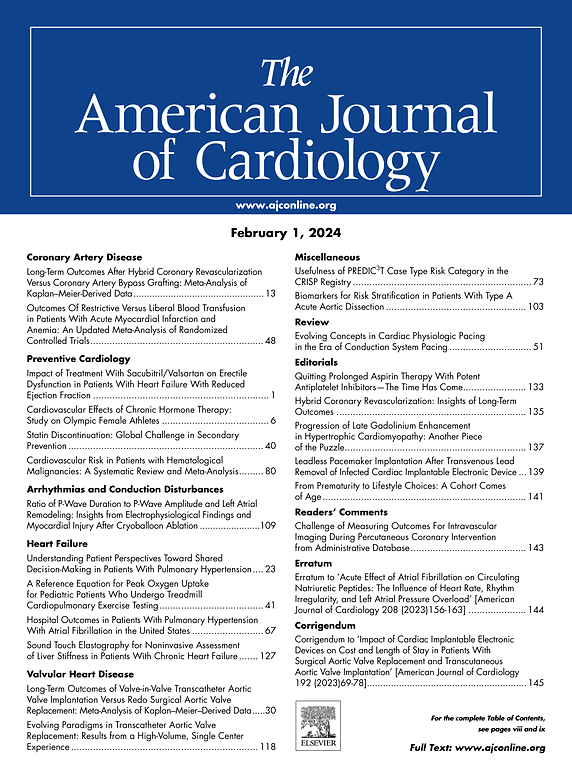
Randomised Controlled Trial
Pomegranate juice consumption doesn't significantly affect overall progress of carotid intima-media thickness, but may slow its progression in subjects with high oxidative stress and lipid issues.
Davidson MH, Maki KC, Dicklin MR, Feinstein SB, Witchger MS, Bell M, McGuire DK, Provost JC, Liker H, Aviram M
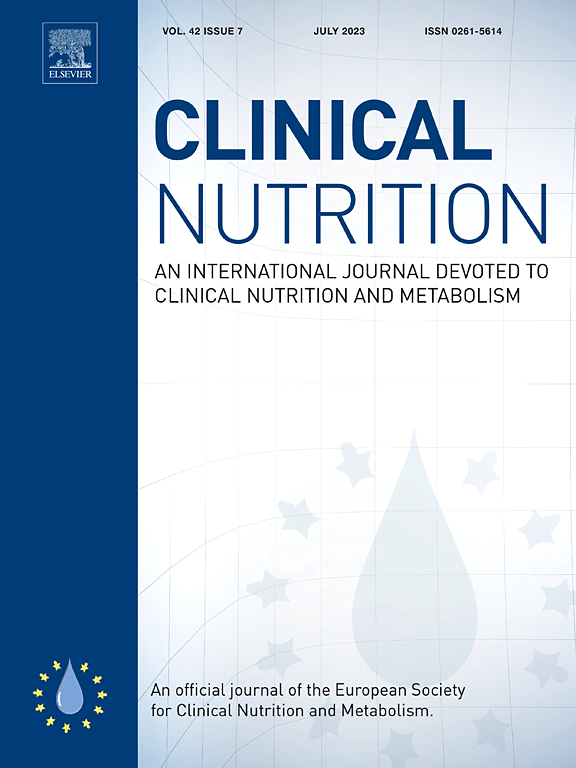
Clinical Study
Consumption of pomegranate juice by patients with carotid artery stenosis decreases carotid intima-media thickness and systolic blood pressure, potentially due to its strong antioxidant properties.
Aviram M, Rosenblat M, Gaitini D, Nitecki S, Hoffman A, Dornfeld L, Volkova N, Presser D, Attias J, Liker H, Hayek T
Executive Summary
Write an executive summary in the form of a blog article on the topic of "Research into Chinese medicine treatment for Oxidative Stress" summarising the research below and using language that can be easily understood by patients and avoiding medical jargon using a professional and caring tone of voice.
Write an executive summary in the form of a blog article on the topic of "Researched Chinese medicine treatments for Oxidative Stress" summarising the research below in an objective and easy to understand way, and using language that can be easily understood by patients. Group the article into Chinese medicine treatments first, followed by nutrition and other treatments. Avoid using medical jargon and use a professional and caring tone of voice.
Write me a concise but easy to understand executive summary on the topic of "Chinese medicine treatments for Oxidative Stress" based on the following research that I will give you. Your summary should be 2 paragraphs long in Australian English spelling and include references to the studies.
A Animal Study published in 2024 in the journal Food Science & Nutrition found that Jujube fruit extracts significantly alleviate oxidative stress in rodent models, potentially offering a valuable dietary supplement against diseases linked to oxidative stress. In this study, relevant animal studies were sourced from various data platforms including PubMed, Web of Science, Embase, China National Knowledge Infrastructure, Wanfang Data Knowledge Service Platform, and VIP Periodical Service Platform. Risk of bias in the included studies was evaluated using the Systematic Review Center for Laboratory Animal Experimentation risk-of-bias tool. Conducting a meta-analysis followed the Cochrane Handbook for Systematic Reviews of Interventions guidelines and utilized Stata 17.0 software. Nineteen studies were ultimately incorporated into the meta-analysis. The meta-analysis indicated that jujube fruit extracts notably reduced the level of malonaldehyde, a marker of oxidative stress, and raised the levels of superoxide dismutase and glutathione peroxidase, both of which are antioxidant enzymes. However, the levels of another antioxidant enzyme, catalase, didn't exhibit significant improvement. The meta-analysis results uncovered considerable heterogeneity. Subsequent subgroup analysis suggested that the source of the target parameters, animal models used, and types of extract could be contributing to the observed heterogeneity. Despite questionable overall methodological quality in the included studies, the study underscores the potential of jujube fruit extracts as effective antioxidant dietary supplements, particularly useful in conditions where oxidative stress is a key pathogenic factor.
A Data Mining published in 2024 in the journal Traditional Medicine Research found that The traditional Chinese medicine prescription combination of Chrysanthemi Flos, Cassiae Semen, Lycii Fructus, Angelicae Sinensis Radix and Salviae Miltiorrhizae Radix et Rhizoma presents potential for treating retinal diseases. Methodology: The researchers employed data mining to discern a new traditional Chinese medicine (TCM) prescription against retinal diseases and explore its medication rule. This was followed by constructing a network of TCMs, core ingredients, core targets, and core pathways using network pharmacology. The binding ability between core active ingredients and core targets was then verified through molecular docking and molecular dynamics simulation techniques. Discussion: The novel TCM prescription screened in this study bears great potential in retinal diseases treatment through a unique mechanism of action. This mechanism involves TCM prescriptions that possess clearing heat and supplementing activities, associated with liver and lung meridians. The mechanism was found to act by modulating several core targets implicated in multiple core pathways such as the AGE-RAGE signaling pathway in diabetic complications, and the PI3K-Akt signaling pathway, among others. This potentially inhibits the inflammatory response, oxidative stress, and retinal neovascularization and apoptosis of retinal ganglion cells and retinal pigment epithelial cells. This improves retinal structural impairment and can have a significant impact on the treatment of retinal diseases.
A Systematic Review published in 2023 in the journal Brain Research found that Pomegranate fruit and its phytochemicals may offer a novel, natural alternative for the treatment of pathological anxiety, with fewer adverse effects than traditional medications. Using a systematic review methodology, the researchers explored the potential anxiolytic (or anxiety-reducing) effects of pomegranate (PG) fruit and its natural compounds. Searches were conducted across numerous databases such as PubMed, ScienceDirect, Google Scholar, WorldWide Science, and Web of Science using specific predetermined terms. Only original articles meeting established inclusion criteria were chosen for review. The data collected from these articles provided information on the part and variety of pomegranates used, the species studied, sample size, anxiety model, dose, route and time of administration, reference drug, main results, and associated mechanisms of action. The review of 59 such studies revealed PG as well as compounds it contains - specifically anthocyanins, flavonoids, tannins, organic acids, and xanthonoids - as having potential anxiolytic effects. According to the existing literature, these effects appear to be driven by several molecular mechanisms. These include the inhibition of specific anxiety-linked receptors, activation of certain cellular pathways associated with anxiety reduction and resilience, modulation of inflammatory proteins, and reduction of oxidative stress. The results position pomegranate and its phytochemicals as a potentially new natural option for the treatment of anxiety disorders. This is the first review to focus on the anxiolytic impact of pomegranates.
A Experimental Study published in 2023 in the journal Journal of Applied Toxicology found that Virgin coconut oil shows potential therapeutic promise against Alzheimer's disease by reducing key markers and enhancing neurotransmitter parameters. In this study, the SH-SY5Y cell lines were cultured in its regular growth medium which was then differentiated by reducing its fetal bovine serum content and adding retinoic acid. Further, brain-derived neurotrophic factor was added in unison with retinoic acid, completing the differentiation process by the seventh day. The study groups comprised of a control group, groups that received virgin coconut oil, Aluminum, both or neither, an Alzheimer model group, and a group replicating the Alzheimer model exposed to Aluminum and virgin coconut oil. The measurable aspects in this study included specific indicators of Alzheimer's disease like hyperphosphorylated Tau protein, amyloid beta 1-40 peptide, and amyloid precursor protein, oxidative stress parameters, and neurotransmitter-related parameters. In the results, it was revealed that virgin coconut oil was successful in reducing levels of amyloid beta and hyperphosphorylated Tau protein in the groups. This composition also seemed to decrease oxidative stress levels associated with Alzheimer's disease, delivering improvement in neurotransmitter parameters, which supports the hypothesis that virgin coconut oil can be therapeutic against this progressive neurological disorder.
A Experimental Study published in 2023 in the journal Biomedicine & Pharmacotherapy found that Fructus Lycii and Salvia miltiorrhiza Bunge extract (FSE) shows potential as a clinical treatment for retinitis pigmentosa by inhibiting photoreceptor cell death following oxidative stress. The study utilized hydrogen peroxide to induce oxidative stress in 661 W cells, which were examined with flow cytometry and an enzyme-linked immunosorbent assay. The impact of this oxidative stress on the cells’ mitochondria was observed using an electron microscope to understand the nature of cell death. The study also analyzed the compensatory effect of the Fructus Lycii and Salvia miltiorrhiza Bunge extract on the retinal structure and function of rd10 mice using histopathological examination, fundus photographs, and electroretinography. Protein levels were evaluated using Western blot assays, specifically targeting proteins including Tumor Protein p53, Solute Carrier Family 7 Member 11, Glutathione peroxidase 4, Arachidonate-12-Lipoxygenase, and Dipeptidyl peptidase 4. The results showed that hydrogen peroxide-induced oxidative stress in 661 W cells increased oxidative stress products and certain protein expressions, while decreasing others. Notably, the activation of Glutathione peroxidase 4 did not lessen reactive oxygen species generation and had little impact on cell death. The research discovered that both Ferrostatin-1 and the extract could lessen reactive oxygen species generation and inhibit cell death of photoreceptors in retinitis pigmentosa, achieving this by inhibiting the expression of one protein and increasing the expression of two others.
A Network Pharmacology published in 2023 in the journal Annals of Translational Medicine found that The research unveils luteolin, quercetin, and kaempferol in RALRG as promising complementary components for RP treatment, with a key role in managing oxidative stress and PI3K/AKT signaling pathways. The research used various databases such as Traditional Chinese Medicine Systems Pharmacology Database and Analysis Platform, GeneCards, and the Online Mendelian Inheritance in Man database to gather the ingredients of RALRG and potential targets of RP and RALRG. A protein-protein interaction network was constructed to visualize these interactions. The R program was utilized to perform functional enrichment. The researchers constructed a visual RALRG-RP-pathway pharmacology network using Cytoscape 3.9.1 and applied molecular docking to compute binding affinity. The research revealed a total of 132 effective active elements in RALRG correlating to 248 target genes. Ninety-two intersection target genes were discovered from the overlap of RP- and RALRG-related genes. These intersection targets were discovered to be primarily involved in oxidative stress, responding to metal ions, and handling chemical stress. Several molecular pathways such as PI3K-AKT and MAPK were identified as closely connected to RP therapy. A potential pharmacology network was designed for the RALRG-RP-pathway with AKT1 and JUN being considered the main targets. The active ingredients luteolin, quercetin, and kaempferol were highlighted as crucial for this mechanism. RALRG overall was established as a main regulator for oxidative stress and PI3K/AKT signaling pathways in the treatment of RP.
A Review Article published in 2023 in the journal Nutrients found that The bioactive peptides found in walnuts have potential neuroprotective effects, including reducing oxidative stress and neuroinflammation, and promoting autophagy and balance in the cholinergic system. The research method used includes the development of various procedures to prepare, isolate, purify, and identify the neuroprotective peptides found in walnuts. Different evaluation approaches were then used to gauge the activity of these peptides within experimental setups, placing emphasis on potential oxidative stress reduction, neuroinflammation mitigation, autophagy promotion, gut microflora regulation, and cholinergic system balance enhancement. The discussion of the results suggests the confirmed neuroprotective benefits of walnut-derived peptides. These peptides showcased their ability to reduce oxidative stress, combat neuroinflammation, stimulate autophagy, and regulate gut microflora and the cholinergic system. Consequently, these findings highlight the value of walnuts in diet, and the potential for these peptides to be utilized as functional food ingredients promoting neurohealth.
A Experimental Study published in 2023 in the journal Nutrients found that Theabrownin from dark tea can potentially reverse insulin resistance and regulate glycolipid metabolism, with longer fermented samples showing greater effects. The study focused on TB1 and TB2, theabrownin isolated from dark tea. TB1 was fermented for 7 days whereas TB2 was fermented for 14 days. The research used HepG2 cells for the experiment. Various techniques such as Western blot and real-time PCR experiments were employed to measure the effects of TB on oxidative stress, mitochondrial function, and glycolipid regulation, which are key components of insulin resistance. The results suggest TB can significantly improve oxidative stress conditions by enhancing mitochondrial function. TB unveiled its potential in improving glycogen synthesis and glucose consumption. Furthermore, TB was found to inhibit harmful processes like gluconeogenesis and fatty acid synthesis via the regulation of various enzymes and proteins. The researchers investigated this by focusing on a signaling pathway (IRS-1/PI3K/Akt). Verification of the effects of TB on glycolipid metabolism was done using a PI3K inhibitor, highlighting a positive correlation between PI3K activation and TB's activity. Notably, the experiment showed TB2, which was fermented longer, was more effective in improving insulin resistance.
A Randomised Controlled Trial published in 2023 in the journal Journal of Medicinal Food found that Daily consumption of pecans for a month can help protect against post-meal oxidative stress in aging adults. The abstract outlines a randomized, parallel, controlled trial where 41 healthy adults aged between 50 and 75 were split into two groups. One group consumed 68 grams of pecans every day for four weeks, while the other group avoided all nuts. Blood samples were obtained from all participants before and after the intervention during fasting and at intervals of 30, 60, and 120 minutes after a meal high in saturated fats. Changes were observed in various parameters, including malondialdehyde - a marker for lipid peroxidation, total antioxidant capacity (TAC), glucose, and insulin levels. The study revealed no significant variances in fasting or post-meal TAC, glucose, or insulin for the pecan consumers compared to the control group. However, there was a noticeable tendency towards a change in fasting lipid peroxidation driven by a minor reduction for the pecan group compared to the control group. Moreover, post-meal lipid peroxidation was suppressed in the pecan group, distinctly different from the control group's results. These outcomes propose that a diet enriched in pecans for one month can provide protection against post-meal oxidative stress in older adults.
A Cohort Study published in 2023 in the journal Heliyon found that Consuming “Sneznik-1/79” mineral water significantly improves intestinal health and reduces cholesterol in type 2 diabetes patients. The study involved 60 patients with confirmed Type 2 Diabetes, who drank “Sneznik-1/79” mineral water from Serbia daily for 28 days. Researchers conducted standard biochemical tests, including glucose level, lipid profile, and stool analysis. Additionally, blood samples were taken to assess the impact of the water on oxidative stress markers. Post consumption of “Sneznik-1/79” water, a substantial decrease in total cholesterol levels was noted. Notably, all patients experienced regular daily bowel movements, indicating improved intestinal peristalsis. Half of the participants showed elimination of dysbiosis. Furthermore, there was an increase in antioxidants like superoxide dismutase and reduced glutathione, suggesting enhanced antioxidant capacity. The study highlights “Sneznik-1/79” water as a potential complementary treatment for improving gut health and reducing cholesterol in Type 2 Diabetes patients.
A Review Article published in 2023 in the journal Frontiers in Nutrition found that Sardines, being an affordable source of Omega-3 and other cardioprotective nutrients, can potentially reduce the need for Omega-3 supplementation and manage cardiometabolic diseases. The abstract primarily acknowledges the importance of Omega-3 polyunsaturated fatty acids with respect to managing diseases related to heart health and metabolism, for instance, type 2 diabetes, hypertension, hypertriglyceridaemia, and fatty liver disease. However, these fatty acids are not the sole beneficial component of sardines. Minerals including but not limited to calcium, potassium, and magnesium as well as substances like taurine and arginine found in sardines have a significant role in controlling mild inflammation and oxidative stress which are usually present in cardiovascular diseases and hemodynamic dysfunction. The results discussed in the abstract suggest a positive correlation between consumption of sardines and potential cardiometabolic benefits. By considering the dose-response relationship effects, a pragmatic approach towards consumption of nutrients was suggested. The intake of sardines was seen not only as a means of Omega-3 supplementation but also as a comprehensive approach to enhancing cardiovascular health. The abstract concludes with an emphasis on the many beneficial nutrients found in sardines besides Omega-3, underlining the need to shift the focus from synthetic supplementation to natural dietary improvement.
A Review Article published in 2023 in the journal Journal of Ethnopharmacology found that Traditional Chinese Medicines (TCM) could increase the survival rate of retinal ganglion cells, thereby playing an active role in treating glaucoma. Methodology: The research involved a comprehensive collection and collation of scientific articles from various databases about TCM and its application on glaucoma. The therapeutic effects of TCM, including their specific formulae, crude drugs, and active components, were analyzed based on existing experimental and clinical research. The GSE26299 database was also used for a bioinformatics analysis of glaucoma, employing the GEO database chip. Results: The traditional Chinese medicines exhibited positive effects in treating glaucoma by potentially improving the microcirculation, managing oxidative stress, and regulating the immune system, which in turn increased the survival rate of retinal ganglion cells. Furthermore, the bioinformatics analysis speculated the pathogenesis of glaucoma to be associated with multiple signaling pathways. The study concluded that TCM could alleviate and treat glaucoma through various methods, with the provision that the differentiation syndrome should be the basis for proposing suitable treatment options.
A Systematic Review published in 2023 in the journal Frontiers in Medicine found that Saffron supplementation significantly decreased oxidative stress markers and has beneficial effects in reducing oxidative stress. For this analysis, we sought to evaluate the impact of saffron supplementation on oxidative stress markers, including malondialdehyde, total antioxidant capacity, total oxidant status, glutathione peroxidase, superoxide dismutase, and prooxidant/antioxidant balance. To do this, we conducted an extensive search across databases such as PubMed/Medline, Web of Science, Cochrane CENTRAL, Scopus, and Google Scholar until December 2022. Our search criteria included randomized controlled trial studies examining the effects of oral saffron supplements on the aforementioned oxidative stress markers. The resulting data were pooled using a random effects model to analyze the results, and we assessed heterogeneity using the Cochrane values. We incorporated 16 cases into our meta-analysis, which comprised of subjects in both saffron and control groups. In our results, we found that saffron consumption resulted in significant reductions in malondialdehyde and total oxidant status levels. Furthermore, it led to a considerable increase in total antioxidant capacity and glutathione peroxidase - all of which are markers indicating oxidative stress. More specifically, within studies where the daily dosage of saffron was greater than 30 mg, and in studies lasting less than 12 weeks, we noted a significant reduction in malondialdehyde levels, especially in participants under 50 years old. Our study faced limitations, including the geographical limitation of the studies being from Iran, the varying nature of the diseases included, and potential confounding factors such as smoking, physical activity, and diet.
A Randomised Controlled Trial published in 2023 in the journal Phytotherapy Research found that Pomegranate juice supplementation has been found to effectively decrease testosterone levels in overweight and obese women diagnosed with polycystic ovary syndrome. In the methodology, the study employed a randomized controlled trial which involved 44 participants. The women, aged between 18 and 40 years, had all been diagnosed with polycystic ovary syndrome and had a body mass index exceeding 25 kg/m. They were randomly divided, with one group consuming 45 ml/day of concentrated pomegranate juice and the other group receiving no intervention. A variety of biomarkers for sex hormones, inflammation, and oxidative stress were measured before starting the trial and again after eight weeks. Further discussion of the results revealed a significant decrease in testosterone levels among the overweight and obese women with polycystic ovary syndrome who took concentrated pomegranate juice over the eight week period, in contrast to those in the control group. Apart from testosterone, no significant changes were observed for luteinizing hormone, sex hormone-binding globulin levels or for markers of inflammation and oxidative stress between the two groups.
A Network Pharmacology published in 2023 in the journal TMR Pharmacology Research found that Chrysanthemum has several active ingredients that can potentially treat dry eye by inhibiting inflammation-related factors and pathways, thus reducing inflammation of lacrimal gland tissue. The study used network pharmacology methods and various databases to further analyze the mechanism of Chrysanthemum in treating dry eye. First, the TCMSP was used to screen for candidate active ingredient molecules of chrysanthemum showcasing requisite oral bioavailability and drug similarity. The active ingredients of chrysanthemum were then identified, followed by target prediction. Cytoscape was used to construct a compound-target network for chrysanthemum. The Online Mendelian Inheritance in Man and DisGeNET databases were utilized to pinpoint pathogenic genes associated with dry eye, and the STRING database produced an interaction network and bar graph to scrutinize protein interactions. Using Venny, a final drug-active ingredient-key target-disease network was created. The study found that Chrysanthemum has eighty active ingredients corresponding to targets for treating dry eye. These key functional targets primarily regulate gene expression, oxidative stress, immune response, apoptosis, proliferation, regulation of cellular inflammation-related factors, and angiogenesis. The primary pathways associated with these key targets include interleukin signaling, metabolism, cytokine signaling in the immune system, immune system, and signal transduction, thereby improving the condition of dry eye primarily through the inhibition of inflammation-related factors.
A Review Article published in 2023 in the journal Phytomedicine found that Pomegranate and its active components can protect against natural and chemical toxic agents, impacting mechanisms such as oxidative stress, inflammation, apoptosis, and liver or cardiac function regulation. This paper is a review of various in vivo and in vitro studies focusing on pomegranate (Punica granatum) and its active components, including ellagic acid and punicalagin, and their protective effects against toxic substances. The articles were sourced from multiple databases like Web of Sciences, Google Scholar, PubMed, and Scopus spanning all available time periods until the end of September 2022. The research indicates that pomegranate and its constituents have showcased protective effects against both natural toxins, such as aflatoxins and endotoxins, and chemical toxicants like arsenic, diazinon, and carbon tetrachloride. This protection is attributed to the preventive mechanisms activated against oxidative stress, reduction of key inflammatory mediators, modulation of apoptosis, and signaling pathways associated with cellular growth. Additionally, these components appear to aid in the improvement of liver and cardiac function through the regulation of key enzymes.
A Review Article published in 2022 in the journal Journal of Functional Foods found that Carrot's bioactive compounds can regulate immune response, reduce oxidative stress, and prevent damaging oxidative destruction, making it a potential preventive tool for various diseases. In this literature review, mechanisms were proposed for how the antioxidant properties of carrot’s β-carotene and other bioactive compounds, such as phenolic acid, flavonoid, polyacetylene, and ascorbic acid could modulate the immune system. These proposals were centered around three main paths: anti-inflammatory response modulation, antioxidant response modulation, and overall immune response modulation (which involves both innate and adaptive responses). In the discussion of results, it was revealed that the bioactive compounds in carrots have the ability to regulate pro-inflammatory and anti-inflammatory cytokines, and are also capable of reducing oxidative stress. This was shown by the decrease in the accumulation of reactive oxygen species and an increase in antioxidant capacity, which collaboratively helps to minimize destructive oxidative destruction. Additionally, these compounds influenced immune components, specifically via the regulation of leukocytes, antigens, immunoglobulins, and histamine levels. As a result, carrots were defined as a functional food source capable of immune modulation and potential prevention and treatment for a range of diseases.
A Experimental Study published in 2022 in the journal The Anatomical Record found that Pomegranate has been found to alleviate morphological and functional changes in the thyroid glands induced by Lithium Carbonate by controlling apoptosis and oxidative stress. The study divided rats into four groups: control, lithium, lithium-pomegranate, and pomegranate. For eight weeks, the rats were treated according to their respective group assignments. Following this period, they were sacrificed, and an array of assessments were conducted on the extracted thyroid glands. These evaluations included estimated levels of thyroid hormones and markers indicating oxidative stress, along with histological, immunohistochemical, and ultrastructural evaluations of the thyroid tissues. Observations in the group treated with lithium carbonate showed significant changes in thyroid hormone levels along with an increased expression of the oxidant marker and decreased expression of the antioxidant marker. Additionally, histological evaluation highlighted disorganization and follicle involution, a decline in both staining intensity and immunoreactivity of an antioxidant enzyme, an increase in collagen fiber content and Bax immunoreactivity, and marked distortions in follicular ultrastructure. However, in the group treated with both lithium carbonate and pomegranate, most of these changes were substantially mitigated, thereby indicating the potential protective role of pomegranate against lithium-induced alterations.
A Network Pharmacology published in 2022 in the journal Combinatorial Chemistry & High Throughput Screening found that The Chinese medicine formulas Zuo Gui Wan and You Gui Wan have the potential to treat premature ovarian failure through different pharmacological pathways. This study used a public database to identify the active ingredients and potential targets of the Zuo Gui Wan and You Gui Wan compounds. These were analyzed in relation to premature ovarian failure (POF) related genes obtained from OMIM and GeneCards. A protein-protein interaction network was established using STRING, and a drug-active ingredient-target gene network was constructed. The study thus identified similarities and differences in potential targets, active ingredients, and enriched pathways between the two compounds. Analyzing the drug-target-pathway network revealed that both compounds contain multiple common active ingredients, as well as unique components, and share several targets in the treatment of POF, showing similar core mechanisms of action. However, each compound also targets some unique pathways, which indicates their differential approaches to POF treatment.
A Network Pharmacology published in 2022 in the journal Antioxidants found that Kelulut honey, either alone or in combination with metformin or clomiphene, can alleviate oxidative stress and reproductive and metabolic abnormalities in rats with polycystic ovary syndrome. To examine the effects of Kelulut honey (KH), metformin, and clomiphene on polycystic ovary syndrome (PCOS), female Sprague-Dawley rats were treated with letrozole to stimulate symptoms of PCOS. The rats were then split up into six groups, each group undergoing a different kind of treatment for a period of 35 days, including KH alone, metformin alone, clomiphene alone, KH combined with metformin, and KH combined with clomiphene. The physicochemical characteristics of the honey were assessed using several tests, and its semi-volatile organic compounds were determined via gas chromatography-mass spectrometry. KH and its combinations with either metformin or clomiphene were found to improve the hormonal profile and ease oxidative stress in the rats. However, while the treatments seemed to improve the oestrus cycle, they reportedly did not affect fasting blood glucose, insulin levels, or body weight in the test subjects.
A Systematic Review published in 2022 in the journal Advances in Nutrition found that Prunes demonstrate potential as a dietary intervention to protect against, prevent and even reverse bone loss in osteoporosis, particularly in postmenopausal women. Using sixteen preclinical trials with in vivo rodent models of osteopenia or osteoporosis, researchers investigated the effect of dietary supplementation with prunes. The research shows prunes' osteoprotective capabilities, preventing, reversing bone loss, and exerting anti-inflammatory and antioxidant effects. The prunes or their polyphenol extracts showed properties that decreased malondialdehyde and NO secretion and increased antioxidant enzyme expression. Two clinical trials further investigated prune consumption (50-100 g/d for 6-12 months) on bone health in postmenopausal women. The results of the studies revealed the promising outcome of improved bone mineral density and bone biomarker due to the consumption of dried plums. However, the effect of prunes on oxidative stress and inflammatory mediators remains less understood. The study hence emphasizes the need to investigate prunes' role in modulating the inflammatory and immune pathways related to bone health.
A Systematic Review published in 2022 in the journal International Journal of Environmental Research and Public Health found that Dietary strategies, such as caloric restriction and ketogenic diets, can alleviate chronic pain and enhance quality of life. This systematic review selected 16 articles from various databases including PubMed, Web of Sciences, ProQuest, and Scopus that were published within the last 6 years. These consisted of randomized clinical trials (RCTs), observational studies, and systematic reviews evaluating the effectiveness of different dietary strategies in the treatment of chronic pain. A range of assessment scales—PEDro, PVI, QUALSYT and the Quality Assessment Tool of Systematic Reviews scale— were utilized to gauge the risk of bias in these studies. The findings indicate an inconclusive consensus on the impact of an intermittent fasting (IF) diet on pain improvement. However, a caloric restriction diet emerged as a potential long-term treatment option for pain. Additionally, time-restricted food and ketogenic diets showed promising results in improving life quality in chronic conditions. Despite some studies indicating opposite results, the majority of the selected articles exhibited good methodological quality on their respective assessment scales.
A Review Article published in 2022 in the journal Molecules found that Cherries and blueberries, rich in phenolic compounds, can be effectively used in pharmaceutical products, smart foods, functional beverages, and nutraceuticals to prevent or treat diseases. The research primarily studied the health-promoting potential of cherries and blueberries, given their high nutritional density and substantial phenolic compounds. The focus was on their ability to counteract oxidative stress markers and suppress pro-inflammatory responses, which are significant factors in chronic diseases such as diabetes. The researchers analyzed these fruits for their potential incorporation into various products such as pharmaceutical preparations, smart foods, functional beverages, and nutraceuticals. In the discussion of the results, it was emphasized how cherries and blueberries exhibit significant biological potential. They were not only seen as effective in combatting oxidative stress and inflammation but also as potential immune boosters. The conclusions underscored the fruits' potential role as functional foods and their relevance to the burgeoning popularity of functional beverages, hinting at their promise for inclusion in a variety of health-related products.
A Animal Study published in 2022 in the journal Cytokine found that Walnut seed skin extract demonstrates potential hepato-renal protective effects, inhibiting inflammatory responses, oxidative stress and apoptosis, in kidney-damaged Sprague-Dawley rats. In the methodology, Sprague-Dawley rats in acute kidney injury state were divided into three groups: a healthy control, a group induced with renal ischemia/reperfusion (IR), and another group induced with renal IR and treated with walnut seed skin (WSS) extract. Blood, liver and kidney tissues were collected for serum evaluations of aspartate aminotransferase, alanine aminotransferase, lactate dehydrogenase, urea, and creatinine. Histopathological studies were performed on liver and kidney tissues, and gene markers related to anti-oxidant, anti-inflammatory, and apoptotic effects were measured. The results showed an improvement in deteriorated serum parameters in rats with renal ischemia pre-treated with WSS extract. Histopathological analysis revealed a protective effect of WSS on kidney and liver tissues. Though gene expression studies yielded diverse results for liver and kidney tissues, the consensus was that WSS had a pronounced protective impact on the liver. It was inferred that WSS's healing potential in renal and hepatic tissues seems to work via inhibiting inflammatory response, oxidative stress, and apoptosis.
A Experimental Study published in 2022 in the journal Journal of Food Biochemistry found that Coconut water and coconut milk ameliorate the negative impacts of heat stress on gastrointestinal health by reducing oxidative stress and suppressing inflammatory responses. The study enlisted four different temperature exposure groups of rats, namely a control group at 30 degrees Celsius, a heat-stressed group exposed to an ambiance of 40 degrees, a heat-stressed group pre-treated with coconut water, and a heat-stressed group with coconut milk. Measurements such as skin and rectal temperatures, as well as evaluations of gastrointestinal motility factors such as intestinal transit, intestinal fluid accumulation, and colonic motility, were taken before and after a two-hour heat exposure over 14 days. Noticeable increases in gastrointestinal motility factors were observed amongst the heat-stressed rats. However, the introduction of coconut milk and water appeared to reverse these increases. Furthermore, the elevated cortisol levels and intestinal lipid peroxidation in the heat-stressed rats were significantly reduced with the introduction of both coconut products. Likewise, results showed an increase in antioxidant enzyme activities in the rats that received either coconut water or milk, in contrast to the control group. Similarly, the coconut water and milk were seen to suppress inflammatory cytokines while enhancing others. The study also noted significant improvements in intestinal morphology among heat-stressed rats treated with either coconut product.
A Review Article published in 2022 in the journal Nutrients found that Apple juice consumed in moderation has been found to positively impact markers of cardiovascular health, potentially influencing risk of cancer and neurodegenerative diseases. The methodology of this review involved examining 67 studies focused on the health implications of apple juice consumption, with special attention given to 20 interventional studies conducted on humans. The bulk of the examined studies looked at potential effects relating to oxidative stress markers, with some also looking at effects on inflammatory markers, lipid profile, and diabetes markers. The analysis of the results highlighted a noticeable association between the consumption of cloudy apple juice and markers revealing good cardiovascular health. The positive effects were especially significant in relation to oxidative stress. In addition, apple juice also exhibited beneficial influence on other health indicators like inflammation, lipid profile, and diabetes.
A Review Article published in 2022 in the journal Evidence-Based Complementary and Alternative Medicine found that Acupuncture can regulate both innate and adaptive immunity of IBD patients, including the balance of Th17/Treg and Th1/Th2 cells, and also modulate intestinal flora. The methodology of the research revolved around a review of existing studies related to the treatment of Inflammatory Bowel Disease (IBD) via acupuncture. The broad scope of exploration focused on the effects of acupuncture on the immunomodulatory mechanism inherent in these patients. The review pursued a detailed study of how acupuncture directly influenced both the innate and adaptive immunity systems in IBD patients as well as its regulation on their intestinal flora. The results discussion revealed that acupuncture had multiple immunomodulatory effects on IBD patients. On one hand, it influenced their innate immunity by regulating elements such as their intestinal epithelial barriers, toll-like receptors, NLRP3 inflammasomes, oxidative stress, and endoplasmic reticulum stress. On the other hand, it affected their adaptive immunity by modulating the balance of Th17/Treg and Th1/Th2 cells. Furthermore, an interesting revelation from the study was that acupuncture could also significantly regulate the intestinal flora of the patients.
A Review Article published in 2022 in the journal Critical Reviews in Food Science and Nutrition found that Goji berries, notably their polysaccharides, exhibit protective effects against inflammatory bowel disease through the preservation of healthy gut microbiota. The review encompassed an in-depth analysis of current literature specially focusing on the role of goji berry and its important functional constituents in countering Inflammatory Bowel Disease (IBD). The core attentiveness of the research is directed towards understanding the interplay between goji berries, particularly their polysaccharides, and gut microbiota. The goji berries’ protective effects were evaluated, focusing on how they curb disruption in gut microbiota, a common facet in IBD. The review concluded that goji berries, especially their polysaccharides, demonstrated appreciable benefits in averting gut microbiota disturbances seen with IBD, thus protecting against this condition. These natural substances, present in goji berries, function as prebiotics, which maintain a balanced gut microbial ecosystem. The research further revealed that proper functioning of gut microbiota and their metabolites was a crucial element in mediating these beneficial effects against IBD, thus cementing the role of dietary interventions in managing diseases linked with gut health.
A Clinical Study published in 2022 in the journal BMC Palliative Care found that Consuming chocolate with higher cocoa content can improve the nutritional status and functionality of older cancer patients in palliative care. In the conducted study, 46 older cancer patients under palliative care were divided into three groups. The control group did not have a change in their diet (CG, 15 patients). The other two groups were given intervention foods—55% cocoa chocolate (IG1, 16 patients) and white chocolate (IG2, 15 patients)—for a duration of four weeks. The primary outcome was assessed based on changes in the patients' nutritional status, as measured by the Mini Nutritional Assessment tool. Other factors examined included food consumption, body measurements, body composition, laboratory parameters, and quality of life, using the European Organization for the Research and Treatment of Cancer instrument. Discussion of the results revealed that the group consuming 55% cocoa chocolate showed an improvement in nutritional scores and functionality, as evidenced by the Mini Nutritional Assessment and the quality of life scores respectively. On the other hand, the group consuming white chocolate displayed decreased oxidative stress levels. However, body composition and anthropometric measurements remained largely unchanged across all three groups.
A Systematic Review published in 2021 in the journal Health Promotion Perspectives found that Pomegranate has been confirmed to improve clinical features and reduce inflammatory, oxidative stress, and apoptosis markers in osteoarthritis. In the methodology, a systematic review was conducted using established databases like Scopus, PubMed, Embase, WOS, ProQuest, and Google Scholar up until February 2021. Both MESH and non-MESH keyword searches were performed in the title, abstract, and keywords. The review considered full-text clinical, animal, and in vitro studies in all languages and specifically excluded review articles, book chapters, conference abstracts, and research related to pomegranate in health problems other than osteoarthritis. A manual search was performed to examine the references or citations of eligible papers as well as grey literature to discover potential researches. The results of the systematic review included twenty-three articles which all showed the beneficial impact of pomegranate across human, animal, and in vitro studies. These showed improvements in clinical presentations and reductions in inflammatory, oxidative stress, and apoptosis markers in osteoarthritis. This demonstrated the therapeutic potential of pomegranate for easing the effects of osteoarthritis.
A Review Article published in 2021 in the journal Frontiers in Pharmacology found that Chinese herbal medicines could alleviate chronic kidney disease symptoms by combating fibrosis, inflammation, oxidative stress, and encouraging repair and regeneration. The study's methodology consisted of both clinical and experimental approaches. It started with an examination of an array of traditional Chinese herbs. The criteria for considered herbs were their clinical efficacy, frequency of use in treating chronic renal disease, and a well-studied mechanism of action. Five herbs, namely, Tanshinone II A, Salvianolic acid A & B, Triptolide, Tripterygium glycosides and a monomer from Kudzu root, made the cut after having met the set criteria. The results showed that these Chinese herbs were found to possess pharmaceutical properties that were effective against fibrosis, inflammation, and oxidative stress. Furthermore, these also showed the potential to promote renal repair and regeneration, which are fundamental for treating chronic kidney disease. These findings suggest a broader scope of therapeutic treatments that could benefit the patients in a more natural and potentially less invasive way.
A Systematic Review published in 2021 in the journal Antioxidants found that Green tea supplementation improves total antioxidant capacity and impacts oxidative stress based on dose levels in adults. The research's methodology involved a systematic search of research materials published in English language up to 21 August 2021. Recognized online databases such as Scopus, PubMed, Embase, and ISI Web of Science were utilized with the appropriate keywords. The study focused on randomized controlled trials that evaluated green tea supplementation, and its relationship with malondialdehyde and total antioxidant capacity in adults. A random-effects model quantified the difference, and the researchers carried out meta-regression and non-linear dose-response analyses to investigate the association between the quantity of green tea consumed and the duration of the intervention. The research analysed the results obtained from sixteen randomized controlled trials, which amount to seventeen study arms comprising a total of 760 participants. The study found that green tea supplementation did have significant effects on total antioxidant capacity, and these effects were chiefly linked to gender and body mass index. However, the results showed that these effects were not significant in cases of low-dose supplementation and obese individuals. On the other hand, no relationship was found between malondialdehyde and green tea supplementation in any subgroup. Nonetheless, meta-regression analyses indicated an inverse linear connection between the change in MDA and the dosage of green tea.
A Review Article published in 2021 in the journal Critical Reviews in Food Science and Nutrition found that Green tea and its component EGCG, demonstrate potential as a treatment for endometriosis by inhibiting growth, invasion, adhesion and angiogenesis. The main research methodology of this work is a narrative review. The paper comprehensively collects and reviews various preclinical studies that propose the use of green tea as a potential treatment for endometriosis. These studies explore the diverse biological properties and activities of green tea and its major bioactive component, (-)-epigallocatechin gallate, including anti-angiogenic, anti-proliferation, anti-metastasis, and apoptosis induction functions. Different potential mechanisms used by green tea to inhibit the growth of endometriosis are considered, such as its effects on inflammation, oxidative stress, invasion, adhesion, and apoptosis. The discussion of the reviewed data highlights the potential therapeutic effects of green tea acting on different molecular and cellular mechanisms in endometriosis. The researchers keenly discussed how green tea exhibited an inhibitory effect on the disease through multiple avenues, including reducing inflammation and oxidative stress, preventing tumor invasion and adhesion, promoting apoptosis (cell death), and limiting angiogenesis (the development of new blood vessels) - all these factors contribute to the growth and progression of endometriosis. The discussion elaborates on the significant roles and wider implications of these processes in understanding and potentially treating endometriosis.
A Review Article published in 2021 in the journal Critical Reviews in Food Science and Nutrition found that Coffee consumption may contribute to the prevention of several inflammatory diseases and types of cancer, with reduced mortality risk deemed safe up to 400mg of caffeine per day. The methodology used in this scholarly review was based on an extensive literature review using the PubMed/Medline database. As the primary research tool, this database facilitated the authors' collation and analysis of relevant studies concerning the impact of coffee consumption on health outcomes. The focus was to determine both the positive and negative aspects of coffee consumption, with an additional aim of providing dosage recommendations. The data collated from these studies was then summarised and analysed through a narrative approach, making the findings more digestible and interpretable. The findings suggested that coffee consumption may play a significant role in preventing inflammatory and oxidative stress-related diseases such as obesity, metabolic syndrome and type 2 diabetes. In addition, findings indicated that coffee consumption also seemed to have an association with a lower incidence of several types of cancer and a reduction in the risk of all-cause mortality. However, notable is the need for a time gap between coffee consumption and the intake of some drugs to avoid potential interactions. It was also concluded that the consumption of up to 400mg/day of caffeine was generally found to be safe for the average person.
A Experimental Study published in 2021 in the journal Journal of Neurochemistry found that Zeaxanthin dipalmitate, a wolfberry-derived carotenoid, can delay retinal degeneration in mice modelling Retinitis Pigmentosa mainly through its anti-inflammatory and oxidative stress effects. In the study's methodology, Zeaxanthin dipalmitate (ZD) was intravitreally injected into mice on postnatal day 16. Subsequent assessment of retinal function and structure were made at P25 using visual behavior tests, multi-electrode-array recordings, and immunostaining. The involved gene expressions and their regulation by ZD were delved into through transcriptome sequencing and western blotting. In the discussion of results, it was discovered that ZD treatment significantly improved the visual behavior of the mice and delayed degeneration of the retinal photoreceptors, enhancing the light responses of photoreceptors, bipolar cells, and retinal ganglion cells. The ZD treatment led to a decline of up-regulated genes connected to inflammation, apoptosis, and oxidative stress. The study found that ZD reduces the activation of signal transducer and activator of transcription 3 and chemokine ligand 2, down-regulates the expression of the inflammatory factor GFAP, and withholds extracellular signal regulated protein kinases and P38, but not JNK pathways. All these findings indicate the potential of ZD as treatment for Retinitis Pigmentosa.
A Review Article published in 2021 in the journal Clinical Ophthalmology found that Curcumin, with its anti-inflammatory, antioxidant, antimicrobial and antimutagenic properties, is a potential therapeutic agent for retinal diseases. This review paper uses various pieces of research from the literature to detail the characteristics of curcumin, a molecule produced by plants. The paper particularly focuses on the beneficial and controversial aspects of curcumin. It talks about the retina's susceptibility to oxidative stress due to its cell composition and constant exposure to photons, highlighting that retinal ganglion cells and photoreceptors are particularly sensitive to oxidative damage. The paper also points to studies that link an imbalance in reactive oxygen species to a wide range of retinal diseases. In the discussion of results, it is stated that a number of studies suggest that curcumin can be well tolerated by humans when taken orally and does not tend to have negative effects, making it a promising candidate for retinal disease treatment. However, a primary limitation is curcumin's poor bioavailability; the body can only absorb a small fraction of the substance as an active compound. Despite that, efforts have been made to improve curcumin's accessibility to target tissues in sufficient quantities.
A Experimental Study published in 2021 in the journal Journal of Ethnopharmacology found that Fructus Lycii and Salvia miltiorrhiza Bunge extract improve retinal morphology and function by regulating the Nrf2/HO-1 pathway to curb oxidative reactions. In terms of methodology, Fructus Lycii and Salvia miltiorrhiza Bunge (FS) extracts were identified through Ultra Performance Liquid Chromatography analysis and administered intragastrically over four weeks to Rd10 mice, known to model retinitis pigmentosa. Following the animals' sacrifice, histopathological examination and Scotopic electroretinography analysis were performed. Oxidative stress markers were determined and the expression levels of Nrf2 and HO-1 mRNA were evaluated via quantitative real-time PCR. Western blot and immunohistochemistry were employed to identify the expression and distribution of Nrf2 and HO-1 protein. In the discussion of the results, substantial morphological improvements were observed regarding the thickness and number of the Outer Nuclear Layer, along with significant functional enhancements in a-amplitude and b-wave amplitude measurements, following FS extract treatment. In addition, the treatment led to a considerable escalation in superoxide dismutase and glutathione peroxidase levels and a reduction in malondialdehyde levels. Furthermore, FS extract was found to stimulate the up-regulation of Nrf2 and HO-1 mRNA and protein expression, possibly underlying the observed retinal enhancements.
A Randomised Controlled Trial published in 2021 in the journal Advances in Integrative Medicine found that Pomegranate peel extract supplementation can decrease total cholesterol and triglyceride levels while boosting antioxidant status in obese women with knee osteoarthritis. The research was a randomized, double-blind placebo-controlled trial involving 66 obese women aged 38 to 60 years old with knee osteoarthritis. These participants were split into two groups, the intervention group and control group, each containing 33 members. The intervention group received pomegranate peel extract capsules (500 mg) twice daily for 8 weeks including standard drug therapy while the control group was given a placebo during the same period. All participants' fasting blood samples, anthropometric measurements, dietary intake data, and physical activity levels were collected both before the start and at the end of the trial. Results analysis showed that pomegranate peel extract supplementation brought down levels of serum total cholesterol, triglyceride and an oxidative stress marker while enhancing levels of some antioxidant enzymes and the overall antioxidant capacity when compared to the control group. However, there were no noticeable alterations between the two groups in terms of low-density lipoprotein cholesterol, high-density lipoprotein cholesterol, and body mass index by the end of the experiment.
A Randomised Controlled Trial published in 2021 in the journal Journal of Complementary and Integrative Medicine found that Avocado/soy unsaponifiables effectively treat osteoarthritis by controlling the balance between oxidant and antioxidant molecular markers. The methodology used in this study was a double-blind, randomized, placebo-controlled, cross-over trial. Forty osteoarthritis patients were classified into two groups: one received avocado/soy unsaponifiables (ASU) for three months followed by three months of placebo, and the other group received a placebo first for three months followed by three months of ASU. The patients' oxidant status was evaluated by measuring their serum malonldialdehyde (MDA). Other measures such as total antioxidant capacity, reduced glutathione, and antioxidant enzymes like superoxide dismutase and catalase were also assessed. After three months of treatment, all patients who were given avocado/soy unsaponifiables exhibited a significant decrease in their serum MDA levels, indicating lower oxidative stress. In comparison, these levels were higher at baseline and after placebo treatment. Furthermore, the treatment with avocado/soy unsaponifiables resulted in positive changes in the patients' antioxidant levels. Analysis also showed that the effect of avocado/soy unsaponifiables was consistent, regardless of the sequence in which the medication was received. These findings demonstrate that avocado/soy unsaponifiables can contribute effectively to the treatment of osteoarthritis by regulating the balance between oxidant and antioxidant molecular markers.
A Systematic Review published in 2021 in the journal Journal of Cosmetic Dermatology found that These results indicate that a certain concentration of snow fungus polysaccharides can effectively alleviate skin damage caused by UVA, and they may be used as an effective component of cosmetics. Tremella fuciformis polysaccharides (TFPS) pretreatment can reduce the oxidative stress of UVA-treated human dermal fibroblasts cells. After TFPS pretreatment, the content of ROS and MDA in the cell decreased significantly and the total antioxidant activity was increased. Among them, the active of CAT, SOD, and GSH-Px in the cells increased significantly. TFPS can also protect fibroblasts by up-regulating Nrf2 and down-regulating Keap1 expression. Finally, it was also found that TFPS pretreatment increased the content of collagen I, elastin, and hyaluronic acid (HA) in skin fibroblasts treated with UVA.
A Experimental Study published in 2021 in the journal Frontiers in Pharmacology found that The Jian-Pi-Yi-Shen (JPYS) traditional Chinese medicine formula aids in the alleviation of renal dysfunction and fibrosis in chronic kidney disease (CKD) rats by combating inflammation and cellular apoptosis. Using an established model of 5/6 nephrectomized (5/6Nx) rats, an evaluation of the effects of the JPYS formula on renal function and fibrosis was conducted. To scrutinize the formula's impacts, markers of apoptosis, inflammation, oxidative stress, and the activity of Nrf2 signaling were measured. Correlative parameters including urinary protein, SCr, BUN, glomerular sclerosis index, tubulointerstitial fibrosis score, and renal histopathology were analyzed to assess the formula's preventive effect on renal dysfunction and fibrosis. The study also evaluated the gene expression associated with fibrosis and related elements such as TGF-β and various types of collagen. The evaluation of JPYS's efficacy revealed significant protection against cell apoptosis, highlighted by altered gene expression of Bcl-2, Bax, caspase 3, caspase 9, and the number of TUNEL-positive cells. Moreover, it was observed that the JPYS formula countered the activation of the NF-κB-mediated inflammatory pathway, exhibiting a decrease in gene expression of numerous inflammatory markers in the kidney. Alongside this, the formula promoted antioxidant performance, alleviating oxidative stress as indicated by antioxidant index indicators and a reduction in reactive oxygen species biomarkers. The study also identified the upswing of essential elements like HO-1 and Nrf2 level and a decline in Keap1 expression, signaling rationale towards the formula's potential relief of renal oxidative damage.
A Review Article published in 2021 in the journal Pharmacological Research found that Baicalin, a Scutellaria baicalensis extract, has been found to have numerous therapeutic applications in liver and gut diseases by mediating apoptosis and immune response pathways. High-throughput screening and bioinformatics technology were utilized in the extraction and study of baicalin from the dried root of Scutellaria baicalensis Georgi, an herb traditionally used in Chinese medicine. The research sought to understand the biological action of baicalin, particularly how it affects diseases related to the liver and gut. The effects were associated mainly with downstream apoptosis and immune response pathways, which are induced by upstream oxidative stress and inflammation. In the discussion of the resultant findings, it was identified that baicalin engages various key factors during oxidative stress regulation. These include PI3K/Akt/NRF2, Keap-1, NF-κB, and HO-1, contributing to the healing effects of baicalin on non-alcoholic fatty liver disease/non-alcoholic steatohepatitis, ulcerative colitis, and cholestasis. Further, it was discovered that baicalin plays a therapeutic role in regulating inflammatory response and apoptosis pathways. This ability aids in the alleviation of liver diseases and suppression of hepatocellular carcinoma. Baicalin was also found to regulate the intestinal flora by promoting the production of short-chain fatty acids, shedding new light on the full range of baicalin's pharmacological effects.
A Experimental Study published in 2021 in the journal Nutrients found that Extra virgin olive oil high in minor polar compounds significantly improves kidney function, reduces oxidative stress, inflammation, and ultimately benefits the body composition. The research study tested two distinct types of extra virgin olive oils, namely Synergy with a high content and Luxolio with a medium content of minor polar compounds, on 40 patients suffering from kidney disease. The patients were administered a 40 mL dosage per day over nine weeks. Researchers assessed the impacts on renal functionality, oxidative stress, inflammation levels, and body composition, before and after a subsequent two-month wash out period. Additionally, the concentration of minor polar compounds in the oils was determined through high-performance liquid chromatography accompanied by diode-array detection and mass spectrometry (HPLC-DAD-MS). The research showed improvements in kidney function indicators such as estimated glomerular filtration rate, albuminuria, azotemia, and uric acid. Further, the patients' lipid profile also improved, as did their inflammation parameters, erythrocyte sedimentation rate, C-reactive protein, and body composition. More notably, these beneficial effects were stronger and lasted longer in those patients who had been given the Synergy oil, indicating a sustained antioxidant and anti-inflammatory impact from EVOOs with higher concentrations of minor polar compounds.
A Experimental Study published in 2021 in the journal Antioxidants found that Pomegranate juice extract (PPJE) appears to reduce chemotherapy-induced skin side effects by inhibiting inflammation and promoting wound repair on the skin. In this study, the impact of pomegranate (L.) juice extract (PPJE) on skin cells treated with 5-Fluorouracil (5-FU), an antineoplastic agent, was evaluated. This involved assessing the extract's ability to inhibit the release of reactive oxygen species and enhance the cellular antioxidant response of the treated skin cells. Specific attention was given to observe the overexpression of cytoprotective enzymes such as heme oxygenase-1 and NAD(P)H dehydrogenase [quinone] 1 after the introduction of PPJE. The results indicated that PPJE indeed blocked the formation of nitrotyrosine and reduced the release of cytokines, therefore indicating a dampened inflammatory response. Furthermore, it was revealed that the extract could inhibit the nuclear translocation of p65-NF-κB, a key regulator of inflammation. The study also pointed out that PPJE could curb apoptosis in cells treated with 5-FU, whilst fostering wound repair. The overall findings suggest that PPJE holds potential as a supplementary agent for managing oxidative and inflammatory issues associated with chemotherapy-induced skin side effects.
A Experimental Study published in 2021 in the journal Brazilian Archives of Biology and Technology found that Ginger supplementation can prevent ethanol-induced reproductive dysfunction by improving hormone levels, reducing oxidative damage, inflammation, and regulating genes involved in testosterone synthesis. The methodology involved twenty-four adult male rats divided into four groups for a 28-day experiment. The researchers administered either ethanol or ginger extract to respective groups and then measured varying physiological factors related to reproductive health such as testosterone levels, antioxidant enzyme activity, concentrations of tumor necrosis factor-alpha, and gonadotropins hormones. In addition, gene expressions related to oxidative damage, inflammation, and testosterone synthesis were also examined. Animating the discussion of results, it was observed that the administration of ethanol significantly decreased levels of hormones, oxidative markers, and lowered gene expression involved in testosterone synthesis. Conversely, ethanol caused an increase in inflammatory markers and the expression of genes related to inflammation. On the other hand, rats given a ginger supplement positively reversed these effects, showing significant improvements in all factors, thus leading to the conclusion that ginger can prevent reproductive issues induced by ethanol. The results obtained from the histological study further confirmed these findings, reaffirming that ginger could effectively counter ethanol-induced reproductive dysfunction.
A Experimental Study published in 2020 in the journal Experimental Eye Research found that Gypenosides, the main functional component from the vine Gynostemma pentaphyllum, display potential as a treatment for Retinitis Pigmentosa by protecting photoreceptor cells from degeneration. In this study, researchers used zebrafish carrying a specific mutation that leads to early retinal degeneration like in Retinitis Pigmentosa, a group of genetic retinal disorders. The mutation, present in the retinitis pigmentosa GTPase regulator interacting protein 1 gene, was exposed to Gypenosides. The substance was sourced from Gynostemma pentaphyllum, a climbing vine, and previously found to combat oxidative stress and inflammation in optic neuritis cells. The results suggest significant benefits from the application of Gypenosides to retinitis pigmentosa. Treatment of the mutated zebrafish resulted in a notable decrease in the death rate of photoreceptor cells. The reaction of antioxidant genes typically associated with oxidative stress was also significantly reduced. Furthermore, there were marked reductions in reactive oxygen species and malondialdehyde production, along with diminished expression of pro-inflammatory cytokines. Overall, the outcome indicates that Gypenosides effectively counteracted the harmful effects of the mutation, protecting the photoreceptors from degeneration.
A Experimental Study published in 2020 in the journal Frontiers in Pharmacology found that Jujube seed extract has been found to primarily reduce anxiety by regulating the GABAergic and serotonergic synapse pathways, specifically modulating GABRA1, HTR1A, and HTR2A. The research relied on a system biology method supported by Ultra Performance Liquid Chromatography Quadrupole Time of Flight Mass Spectrometry (UPLC-Q-TOF/MS) and Real-Time Quantitative Polymerase Chain Reaction (RT-qPCR). Initially, 35 phytochemicals were identified from the Jujube seed extract, which related to 71 anxiolytic targets. Further investigations, including protein-protein interaction, gene cluster, Gene Ontology, and Kyoto Encyclopedia of Genes and Genomes (KEGG) pathways analyses, were conducted to identify the anxiolytic mechanisms of the extract. The results highlighted that the main anxiolytic mechanisms of the Jujube seed extract were linked to the regulation of serotonergic and GABAergic synapse pathways. The extract's impact on the mRNA expressions of multiple gamma-aminobutyric acid type A (GABA) and serotonin (5-HT) receptors subtypes was verified in human neuroblastoma cells. Surprisingly, the extract (250 μg/mL) not only amplified the mRNA level of GABRA1 and GABRA3 alongside HTR1A, HTR2A, and HTR2B in untreated cells but also suppressed the overexpressed mRNA of GABRA1, GABRA2, HTR1A, and HTR2A in stress-induced cells.
A Systematic Review published in 2020 in the journal Complementary Therapies in Medicine found that Cinnamon supplementation significantly decreases inflammation and oxidative stress levels, serving as a potential additive for cardiometabolic health improvement. The systematic review and meta-analysis followed the Preferred Reporting Items of Systematic Reviews and Meta-Analysis guidelines. A comprehensive search for appropriate clinical trials was performed across multiple databases including PubMed/MEDLINE, Scopus, Cochrane Library, Web of Science, Embase, and Google Scholar until January 2020. After duplicates were removed, 1145 studies were found eligible and 12 studies were finally included in the meta-analysis, investigating the impact of cinnamon supplementation dosages ranging between 1.5 to 4 grams per day. The results of the meta-analysis revealed that cinnamon supplementation led to a significant reduction in inflammation markers, C-reactive protein and interleukin-6, alongside a decrease in malondialdehyde, an oxidative stress marker. Concurrently, an increase was observed in the total antioxidant capacity following the supplementation, implying an enhancement in the body's defensive ability against oxidative damage. Nevertheless, no significant change was identified in the levels of intercellular adhesion molecule-1 after the cinnamon supplementation.
A Review Article published in 2020 in the journal The Journal of Nutritional Biochemistry found that Honey, with its variable composition based on botanical origin, exhibits antioxidant and anti-inflammatory properties, suggesting its potential efficacy in managing obesity-related dysfunctions, including neurodegeneration, through improved glycemic control and lipid profile. The review explores honey's therapeutic potential, emphasizing its diverse bioactive compounds. The focus is on its effects in combating obesity-related dysfunctions, supported by experimental evidence from animal studies. Experimental findings indicate that honey can enhance glycemic control and lipid profile, offering protection against endothelial dysfunction and neurodegeneration in obesity. The role of honey's key constituents, particularly polyphenols, is highlighted, underscoring the need for further human studies to confirm these health benefits.
A Systematic Review published in 2020 in the journal Evidence-Based Complementary and Alternative Medicine found that Acupuncture at Zusanli (ST36) might be effective in reducing injuries induced by sepsis in various organs by reducing oxidative stress and inflammation. The researchers conducted a systematic review of seven databases, covering the inception of each to May 2019. They identified 54 studies that used acupuncture at ST36, a specific acupuncture point, for treating experimental sepsis, drawing from both English and Chinese literature resources. The studies reviewed suggest that acupuncture could serve as a complementary strategy in treating sepsis by reducing damage in multiple body systems: cardiac, lung, kidney, liver, gastrointestinal tract, and the immune system. It's thought to achieve these results through several mechanisms: limiting oxidative stress, managing inflammation, improving microcirculation, and upholding immune balance with the help of dopamine. Worth noting, however, is that these positive findings must be carefully considered due to the methodological quality and potential publication bias of the included studies.
A Systematic Review published in 2020 in the journal Complementary Therapies in Medicine found that Cocoa consumption significantly reduces markers of oxidative stress in the adult population, affirming its important role in the human metabolic pathway. This study systematically reviewed interventional studies to determine the impact of cocoa consumption on oxidative stress markers in adults. Numerous databases, including PubMed, Cochrane's library, Science Direct, Scopus, Google scholar and ISI web of science, were searched for all relevant literature up until March 2019. The Jadad scale was utilized to grade the quality of each study. Out of 1402 studies, 48 met the inclusion criteria for the systematic review and 16 were selected for meta-analysis. The pooled data from the random-effect model provided evidence that cocoa consumption effectively lowered malondialdehyde and 8-iso-prostaglandin F2α, but no significant changes were noted in other markers of oxidative stress. The results underscored cocoa's essential function in the human metabolic process by its potential to decrease oxidative stress.
A Systematic Review published in 2019 in the journal Food Reviews International found that Sesame consumption significantly increases enzymatic (superoxide dismutase, glutathione peroxidase, catalase) and non-enzymatic (vitamin C, vitamin E, β-carotene, and glutathione) antioxidants. Meta-analyses revealed that sesame consumption significantly increases enzymatic (superoxide dismutase, glutathione peroxidase, catalase) and non-enzymatic (vitamin C, vitamin E, β-carotene, and glutathione) antioxidants. However, no significant effect was observed on malondialdehyde (MDA), total antioxidant capacity and α-tocopherol levels. It was shown that MDA levels significantly decreases only when sesame seeds were used for supplementation. Sesame consumption is associated with improved oxidative status. High quality randomized controlled clinical trials from diverse regions are still needed.
A Animal Study published in 2019 in the journal Journal of Food Biochemistry found that Pomegranate rind extract has been found to decrease pain and inflammation, suggesting it could contribute to treating rheumatoid arthritis. The researchers tested the effects of various doses of pomegranate rind extract on Wistar rats within established models of pain and inflammation, such as eddy's hot plate-induced algesia, carrageenan, and Complete Freund's adjuvant-induced models. Indomethacin was also evaluated for comparison. Researchers used bioactive compounds such as phenolics and flavanoids, both of which are known for their potent antioxidant activity. The results observed showed that a dose of 200 mg/kg of pomegranate led to a clear reduction in paw swelling in the rats in both inflammation models. The data further revealed an increase in pain threshold. Through these results, it was determined that pomegranate extract acts to reduce pain and inflammation by inhibiting the activation of a number of inflammatory markers. Furthermore, this study presents the first report on the inhibitory mechanism of these markers by pomegranate rind extract, which is enriched with tannins and flavanoids.
A Systematic Review published in 2019 in the journal Nutrients found that Bioactive compounds present in different parts of radishes, such as leaves, sprouts, stem and roots, act on a variety of potential drug targets associated with ailments, such as cancer, inflammation, liver injury and diabetes. Radishes is of great pharmaceutical importance, most of which has been attributed to its antioxidant property. The administration of radish extracts under numerous pathological conditions aids in the recovery of diseases and in the prevention of harmful ailments because of their attributed bioactivities. Bioactive compounds present in different parts of radishes, such as leaves, sprouts, stem and roots, act on a variety of potential drug targets associated with ailments, such as cancer, inflammation, liver injury and diabetes. However, the in-depth molecular mechanistic studies are required to address the regulatory roles of bioactive compounds in radish extracts. In future, researches focusing on the determination and pharmacokinetic elucidation of the bioactive compounds in radishes could facilitate the designing of plant based drugs for life threatening disorders, such as cancer and diabetes. Overall, the knowledge gained from the present researches in radish should be utilized in the discovery of novel drug molecules with higher efficacy towards drug targeting with less side effects.
A Randomised Controlled Trial published in 2019 in the journal Nutrients found that Daily consumption of tart cherry juice for 12 weeks showed anti-oxidative and anti-inflammatory properties which may reduce blood pressure and lower LDL cholesterol in older adults. In the randomized-controlled clinical trial conducted, 37 participants aged between 65 and 80 were given either 480 mL of tart cherry juice or a control drink to consume daily for a span of 12 weeks. Blood biomarkers linked to inflammation and oxidative stress were analyzed both at the start and after the 12 weeks intervention. Post the intervention period, levels of several inflammation and oxidative stress blood biomarkers in the tart cherry juice group observed notable differences compared to the control group. Particularly, a perceivable elevation in DNA repair activity coupled with a reduced mean c-reactive protein level was seen. Furthermore, a significant group effect was seen in plasma levels of c-reactive protein and malondialdehyde, with a slightly less significant effect observed for oxidized low-density lipoprotein. Post- intervention plasma levels showed a decreasing trend, with c-reactive protein, malondialdehyde, and oxidized low-density lipoprotein falling by 25%, 3%, and 11% respectively compared to the baseline values.
A Randomised Controlled Trial published in 2019 in the journal Food & Function found that Daily consumption of tart cherry juice may enhance cognitive abilities in older adults, likely due to reduction of hypertension, inflammation, and oxidative stress. In this randomized controlled trial, 37 adults aged between 65 and 80 years with normal cognitive function were assigned to consume two cups of Montmorency tart cherry juice daily for a duration of 12 weeks. Participants' subjective memory and objective cognitive performance were evaluated at the starting point and after the 12-week juice supplementation using a validated memory questionnaire and a standard assortment of tests designed for cognitive assessment. Factors such as daily caloric intake and physical activity levels were also monitored during the study. After the 12-week intervention, participants who consumed tart cherry juice showed an improvement in their contentment with memory scores, demonstrated decreased scores of movement time, and performed better on a task of paired associates learning when compared to the control group. Notably, the results revealed that the tart cherry juice group demonstrated improvements on measures of visual sustained attention and spatial working memory relative to their own baseline values. These findings suggest that the potential benefits of tart cherry juice to cognitive abilities might be attributed to the juice's antioxidant and anti-inflammatory properties, and its capacity to reduce blood pressure.
A Systematic Review published in 2018 in the journal Biomolecules found that Ginger supplementation enhances the production of testosterone in males by reducing oxidative stress and increasing luteinizing hormone production, cholesterol in testes, and blood flow to the testes. The study reviewed a collection of English language articles from three databases— PubMed, Scopus, and Web of Science— from November 1991 through August 2018. Keywords for the search included "ginger" and "testosterone". The references from relevant published articles were also reviewed. The methodology encompassed both in-vivo and basic research studies that sought to discover a link between ginger and testosterone. The results revealed that ginger supplementation enhances testosterone production in males, particularly in conditions of oxidative stress. This effect is achieved primarily by increasing the production of luteinizing hormone, cholesterol levels in the testes, reducing testes oxidative stress and lipid peroxidation, enhancing antioxidant enzyme activity, normalizing blood glucose and increasing blood flow in the testes. Furthermore, the study shows a correlation between ginger supplementation and increased testicular weight, and recycling of testosterone receptors.
A Systematic Review published in 2018 in the journal The American Journal of Clinical Nutrition found that Incorporating walnuts into the diet improved blood lipid profile without adversely affecting body weight or blood pressure. The present meta-analysis of controlled trials provides robust evidence for the benefits of walnut consumption on blood lipids without adversely affecting body weight or blood pressure and supports the results of epidemiologic studies showing inverse associations between walnut consumption and CVD risk. Despite walnuts being energy-dense, the consumption of walnuts does not promote weight gain and thus they can be incorporated into an overall healthy dietary pattern to enhance health benefits.
A Review Article published in 2018 in the journal Journal of Acupuncture and Meridian Studies found that Acupuncture effectively manages a range of post-spinal cord injury complications, including motor and sensory dysfunction, pain, neurogenic bowel and bladder, pressure ulcers, spasticity, and osteoporosis. The effect of acupuncture on post-spinal cord injury orthostatic hypotension and sexual dysfunction remains unclear. Decreased oxidative stress, inhibition of inflammation and neuronal apoptosis, regulation of the expression and activity of endogenous biological mediators, and increased regenerative stem cell production are the possible mechanisms of acupuncture therapy for spinal cord injury. Although many limitations have been reported in previous studies, given the evidence for the efficacy of acupuncture, we recommend that physicians should support the use of acupuncture therapy for SCI complications.
A Systematic Review published in 2017 in the journal Molecular Medicine Reports found that Tremella fuciformis polysaccharide alleviated hydrogen peroxide‑induced oxidative stress and apoptosis in skin fibroblasts via upregulation of SIRT1 expression, indicating that TFPS may act as a potential therapeutic agent for oxidative‑stress‑associated skin diseases and aging. We demonstrated that pretreatment with TFPS suppressed H2O2-induced oxidative stress and apoptosis in skin fibroblasts in a concentration-dependent manner and possessed excellent antioxidative properties. Therefore, our present findings may provide a theoretical basis for TFPS as an alternative herbal food supplement and potential pharmacotherapy for skin injury and aging. However, given that TFPS contains several polysaccharides and has a variety of pharmacological effects, our study, which focused on oxidative stress inhibition and anti-apoptotic effects, has limitations. Further studies are required to define the potential protective mechanisms of TFPS in H2O2-induced skin injury. In summary, we revealed that TFPS exhibits protective properties against hydrogen peroxide-induced oxidative stress and apoptosis mainly by upregulating SIRT1 and promoting downstream signaling, suggesting that TFPS is a potential therapeutic agent for oxidative stress-related skin diseases and skin aging.
A Clinical Study published in 2017 in the journal Food & Function found that Blueberry intake for four weeks decreased levels of a biomarker for oxidative DNA damage in postmenopausal women with pre and early stage hypertension. In the experiment, a randomized, parallel-arm, double-blind, placebo-controlled clinical trial was carried out with 40 postmenopausal women, aged 45 to 65 years, who were either pre or at stage 1 of hypertension. The participants were randomly divided into two, where one group ingested 22 g of freeze-dried highbush blueberry powder every day and the other a placebo. The biomarkers for oxidative DNA damage, oxidative stress, inflammation, and antioxidant defense were evaluated at the commencement, in the middle, and at the end of the eight week period. The levels of the biomarker for oxidative DNA damage, 8-hydroxy-2'-deoxyguanosine (8-OHdG), were found to drop significantly in the group consuming blueberries at the end of the fourth week when compared to the placebo group. However, the levels didn't show a significant difference between the groups at the end of the eighth week. No noteworthy changes were observed in the other measured biomarkers as a result of blueberry consumption.
A Experimental Study published in 2016 in the journal Food Science and Human Wellness found that Pu-erh tea water extracts could potentially enhance liver health and reduce oxidative stress in rats on a high-fat diet. In this study, fifty SD rats were split into five distinct groups and subjected to a high-fat diet. Their body weights were noted daily. Researches measured the serum levels of malondialdehyde (MDA), glucose, catalysts such as alanine aminotransferase and aspartate aminotransferase, nitric oxide synthase, and pyruvate kinase. Besides, hepatic glycogen levels were assessed, along with the activity of liver enzymes like total superoxide dismutase, catalase, and glutathione peroxidase. These measurements were consistently undertaken for a duration of 12 weeks. The findings showcased a decrease in the body weight and fat index of rats after the administration of Pu-erh tea extract. The reduction in body weight and fat index was accompanied by a decrease in malondialdehyde and nitric oxide synthase levels. Interestingly, there was also a noticeable increase in the activities of hepatic total superoxide dismutase, catalase, and glutathione peroxidase. These findings suggest that the Pu-erh extract might reduce the oxidant stress state, inhabit lipid peroxidation, and protect liver health in rats. Simultaneously, the extracts seemed to boost the production of liver glycogen, enhance the activity of pyruvate kinase, and decrease glucose levels, thereby possibly safeguarding the liver from diseases linked to Type II Diabetes.
A Systematic Review published in 2016 in the journal Journal of Medicinal Food found that The studies assessed showed that sesame could have a significant effect on oxidative stress and the antioxidant defense system, being considered a food with an important antioxidant function in the different populations studied. In conclusion, despite the limitations and biases of this systematic review, the studies assessed showed that sesame could have a significant effect on oxidative stress and the antioxidant defense system, being considered a food with an important antioxidant function in the different populations studied (individuals with dyslipidemia, diabetes, and hypertension), as well as in its different presentations (oil, seed flour, and capsule). However, better-controlled studies still lack to assess the positive effects on different populations. There are few clinical trials assessing the effect of sesame on oxidative stress. The studies included in this review, mainly those with sesame oil and black sesame meal capsules administered to hypertensive and prehypertensive populations, respectively, showed an increase in enzymatic (SOD, GSH, GPx, and CAT) and nonenzymatic antioxidants (vitamin C, vitamin E, and beta-carotene), as well as a reduction in oxidative stress markers (TBARS and MDA). Although several studies have reported that the exact mechanisms of oxidative stress reduction remain to be fully explained, this review showed that sesame can have a significant positive impact on the health of different popula- tions.
A Experimental Study published in 2016 in the journal Scientific Reports found that The component pterostilbene, found naturally in blueberries, shows potential in preventing inflammation and oxidative stress on the human cornea, suggesting protection against dry eyes. This research employed an in vitro culture model of human corneal epithelial cells, exposing these cells to a hyperosmotic medium. Gene expression was observed via RT-qPCR, while protein production or activity was found using methods including ELISA, zymography, Western blotting, and immunofluorescent staining. Reactive oxygen species' production was also monitored using a DCFDA kit. Pterostilbene was administered and its effects on the expression of pro-inflammatory mediators and reactive oxygen species production were subsequently observed. The results showed that in corneal cells exposed to hyperosmotic medium, the addition of pterostilbene resulted in a notable decrease in the expression of pro-inflammatory mediators and suppressed overproduction of reactive oxygen species. Furthermore, pterostilbene also showed a significant decrease in the levels of oxidative damage biomarkers; it was found to rebalance homeostasis between oxygenases and anti-oxidative enzymes, demonstrating that pterostilbene has potentially protective effects on the human cornea from inflammation and oxidative stress.
A Clinical Study published in 2016 in the journal Journal of the International Society of Sports Nutrition found that Powdered tart cherry supplementation surrounding endurance exercise can decrease muscle damage markers, inflammation, oxidative stress and muscle soreness, while improving performance. In this study, 27 endurance-trained runners were matched based on their race pace, age, body mass, and fat-free mass. The runners were split into two groups in a double-blind manner: a placebo group given capsules containing 480 mg of rice flour and a tart cherries group given CherryPURE® capsules. These were ingested daily for 10 days, including on the day of the half-marathon and up to 48 hours post-race. The results showed that runners given tart cherry supplementation completed their half-marathon faster (by 13%) than those given a placebo. Moreover, the tart cherry group had less muscle damage markers over time, a steady increase in antioxidant activity during recovery, 47% lower inflammatory markers, and a 34% lower pre-run soreness in the medial quadriceps compared to the placebo group. These results demonstrate the beneficial effects of tart cherry supplementation on performance and recovery in aerobically trained individuals.
A Clinical Study published in 2015 in the journal Journal of the International Society of Sports Nutrition found that Taking a powdered tart cherry supplement before and after intense resistance exercise can decrease muscle soreness, recovery strength loss, and signs of muscle damage. In the methodology of this study, 23 healthy, resistance-trained men were chosen and paired based on relative maximal back squat strength, age, body weight, and fat-free mass. They were randomly assigned to ingest capsules containing either a placebo or powdered tart cherries for 10 days, including on the day of exercise as well as 48-hours post-exercise. The subjects performed ten sets of ten repetitions at 70% of a 1-RM back squat exercise. Fasting blood samples were taken along with isokinetic MVCs and quadriceps muscle soreness ratings before the exercise and at various intervals after the exercise. In terms of the results, muscle soreness was found to be lower in the group that consumed the tart cherry supplement over the course of the exercise. Furthermore, this group showed lesser changes in serum levels of creatinine and total protein. However, no significant effects were observed for serum inflammatory or anti-inflammatory markers and no significant changes in free radical production, lipid peroxidation, or antioxidant capacity markers were seen amongst the group that took the tart cherry supplement. The group that took the supplement also showed greater changes in whole blood lymphocyte counts from before the exercise, but their lymphocyte counts returned faster to pre-exercise values compared to the placebo group.
A Systematic Review published in 2014 in the journal The Journal of Nutrition found that Polyphenolic compounds found in walnuts not only reduce the oxidant and inflammatory load on brain cells but also improve interneuronal signaling, increase neurogenesis, and enhance sequestration of insoluble toxic protein aggregates. In conclusion, age-related increases in oxidative stress and inflammation, especially when coupled with metabolic and cardiovascular dysfunction, lead to neurodegeneration and cognitive decline. This process of brain aging occurs even in the absence of specific neurodegenerative diseases. Although most chronic neurodegenerative diseases cannot currently be cured, preventive measures earlier in life can protect cognitive function in old age and may prevent or delay the onset of debilitating neurodegenerative diseases. Dietary interventions provide a safe and palatable means of modifying the body's internal environment and, importantly, the neuronal environment within the brain. Walnut polyphenols and tocopherols can reduce oxidative stress and inflammation; furthermore, PUFAs help maintain neuronal membrane integrity and attenuate protein aggregation involved in AD. In rodent studies, the addition of dietary walnuts, equivalent to a single serving of walnuts for humans, was sufficient to improve both motor and cognitive behavior in aged animals. In humans, the inclusion of walnuts in the diet improved cardiovascular health, which is itself a risk factor for neurodegenerative diseases and age-related cognitive decline. Taken together, this evidence suggests that the integration of walnuts into a healthy diet could be an effective means of prolonging health spans, slowing the processes of brain aging, and reducing the risk of chronic neurodegenerative disease.
A Experimental Study published in 2014 in the journal Evidence-Based Complementary and Alternative Medicine found that Honey, specifically its polyphenols, show promising signs of enhancing memory and counteracting neurodegenerative diseases by reducing oxidative stress and neuroinflammation. The research focuses on the analysis of the nootropic and neuropharmacological benefits of honey, with particular emphasis on its polyphenol constituents. Essentially, honey's nutritional and physiological effects on memory enhancement and various neurological activities have been examined. This study delves into the mechanistic approach in which honey, as a natural compound, can mitigate oxidative stress while enhancing the cellular antioxidant defense system - a cue to its potential role in neutralizing reactive oxygen species that have harmful effects on neurological health. The findings from the research suggest that honey and its polyphenols play a noteworthy role in neuronal health. They display a potential ability to improve memory deficits and other neurodegenerative diseases. In particular, honey polyphenols have been associated with apoptosis activities and the reduction of microglia-induced neuroinflammation. Furthermore, the direct involvement of these polyphenols in synaptic plasticity was found, which could have a substantial effect on the behavior-modulating neural circuitry. Overall, these findings indicate the possible therapeutic value of honey and its polyphenols on the health of the neurological system.
A Review Article published in 2013 in the journal Anti-Cancer Agents in Medicinal Chemistry found that Blueberries, due to their phenolic compounds, show potential as both dietary and supplemental anti-cancer agents by inhibiting cancer cell growth and promoting apoptosis. The researchers synthesized evidence from previous in vitro, in vivo, and a limited number of clinical studies to evaluate the anti-cancer efficacy of blueberries. These studies primarily focused on the fruit's phenolic compounds, which are known for their high antioxidant capacity. The mechanisms underlying the anti-cancer effects of blueberries were analyzed, such as their capacity to inhibit the production of pro-inflammatory molecules, oxidative stress, and products of oxidative stress like DNA damage. In the discussion of the results, it was found that blueberries manifest their anti-cancer properties through the inhibition of cancer cell proliferation and induction of apoptosis. This makes them promising functional foods and nutritional supplements. The evidence strongly indicates the high potential of blueberries as a preventive measure against carcinogenesis, solidifying their position as an anti-cancer fruit. The potential of blueberries in this field certainly demands further exploration.
A Systematic Review published in 2011 in the journal Nutrition Journal found that These results suggest the possible antihypertensive effects of black sesame meal on improving antioxidant status and decreasing oxidant stress. This study suggests a beneficial effect of dietary black sesame meal on a reduction in blood pressure in pre-hypertensive humans. It is likely that the antihypertensive effect is due to decreased oxidative stress. Taken together with the absence of side effects and inexpensive preparation, the regular ingestion of dietary black sesame meal may be beneficial for CVD prevention in individuals with prehypertension, or even those with hypertension. A future study that investigates this advantageous effect is suggested.
A Randomised Controlled Trial published in 2009 in the journal The American Journal of Cardiology found that Pomegranate juice consumption doesn't significantly affect overall progress of carotid intima-media thickness, but may slow its progression in subjects with high oxidative stress and lipid issues. In the study, a randomized, double-blind, parallel trial was carried out to assess the impact of daily consumption of pomegranate juice on carotid intima-media thickness progression rates in subjects moderately at risk for coronary heart disease. The participants consisted of elderly men and women who already had one or more major risk factors for the disease. Half of the participants were given 240 ml of pomegranate juice daily to consume for a period of up to 18 months, while the other half were provided with a control beverage. The findings of the trial showed no significant difference in carotid intima-media thickness progression rates between the two groups who consumed pomegranate juice and the control beverage respectively. However, in-depth analyses revealed that among individuals with the highest tertiles for baseline serum lipid peroxides, triglycerides, high-density lipoprotein cholesterol and other factors, those in the pomegranate juice group had experienced notably less progression of carotid intima-media thickness.
A Clinical Study published in 2004 in the journal Clinical Nutrition found that Consumption of pomegranate juice by patients with carotid artery stenosis decreases carotid intima-media thickness and systolic blood pressure, potentially due to its strong antioxidant properties. The researchers investigated the effects of consuming pomegranate juice, enriched with potent tannins and anthocyanins, on carotid lesion progression, oxidative stress, and blood pressure in patients suffering from carotid artery stenosis. Over a period of 1-3 years, ten patients were supplemented with pomegranate juice, with blood samples collected before the treatment and during juice consumption. A control group, which did not consume pomegranate juice, was also monitored. The study revealed significant reduction in carotid intima-media thickness of up to 30% after a year of pomegranate juice consumption as compared to the control group that saw an increase of 9%. Pomegranate juice consumption was also associated with an 83% increase in the patients' serum paraoxonase 1 activity, and a significant reduction in serum LDL basal oxidative state and LDL susceptibility to copper ion-induced oxidation. Antibodies against oxidized LDL in serum levels were decreased by 19%, and total antioxidant status increased by 130%. Moreover, systolic blood pressure reduced by 12% after a year of juice consumption. Most notably, the maximal effects were observed after one year of juice consumption, with no additional significant beneficial impacts observed with further juice consumption over a span of three years.
Moderation Tools
Topic
Sign In
Users not signed in are limited to viewing the 5 most recent items of content.
An excellent review article highlighting the benefits of this very underappreciated yet highly nutritious fish. For example, the calcium content in 100 g of sardines is equivalent to the amount found in ~ 400 ml of milk (38% of the recommended dietary allowance). Sardines also contain a considerable amount of iron (2.9 mg/100 g) comparable to that of meat and higher than other commonly consumed types of fish. —Jinnan C 20 Oct 2023